Explore topic-wise InterviewSolutions in .
This section includes InterviewSolutions, each offering curated multiple-choice questions to sharpen your knowledge and support exam preparation. Choose a topic below to get started.
| 1151. |
Eight girls Megha,Swati,Rekha,Priya,Anjali,Rani,Neha,Ritu are sitting around a circular table such that five of themare facing towards the centre and the rest are facing away from the centre. Three persons are sitting between Rani and Ritu, who are facing the centre. Rekha is 2nd to the right of Rani and faces opposite direction to Rani. Megha sits 3rd to the left of Rekha. Neha is one of the neighbour of Anjali. Neha does not face Megha.Two persons sit between Neha and Swati, who is not neighbour of Ritu. Neha and Megha face same direction but opposite to rani. Which of the following represents the immediate neighbor of Neha ? |
|
Answer» (i) REKHA 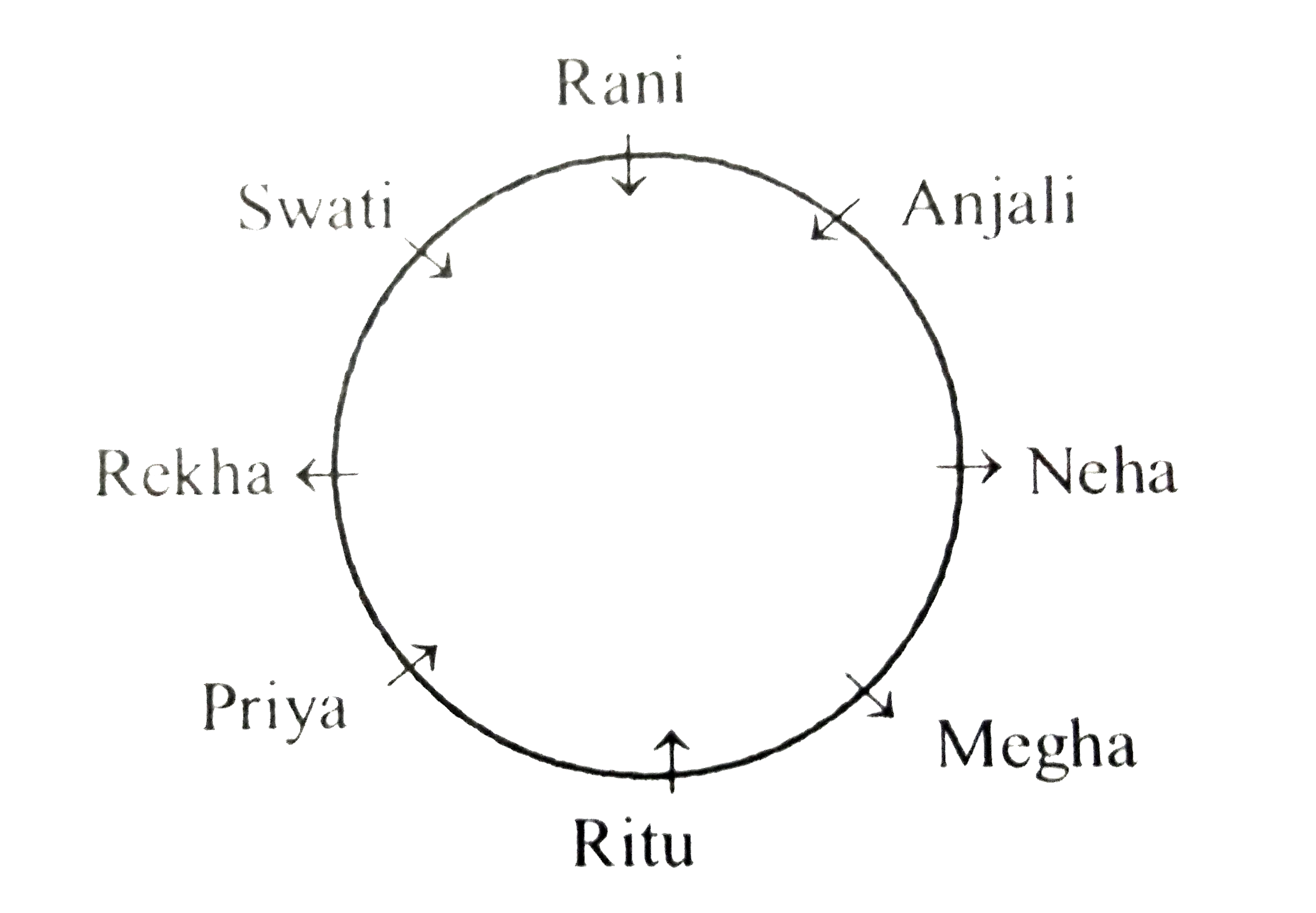
|
|
| 1152. |
Statements: Some pens are keys. Some keys are locks. All locks are cards. No card is Paper Conclusions: I. No lock is paper II. Some cards are keys III. Some keys are not paper |
|
Answer» I and II FOLLOW 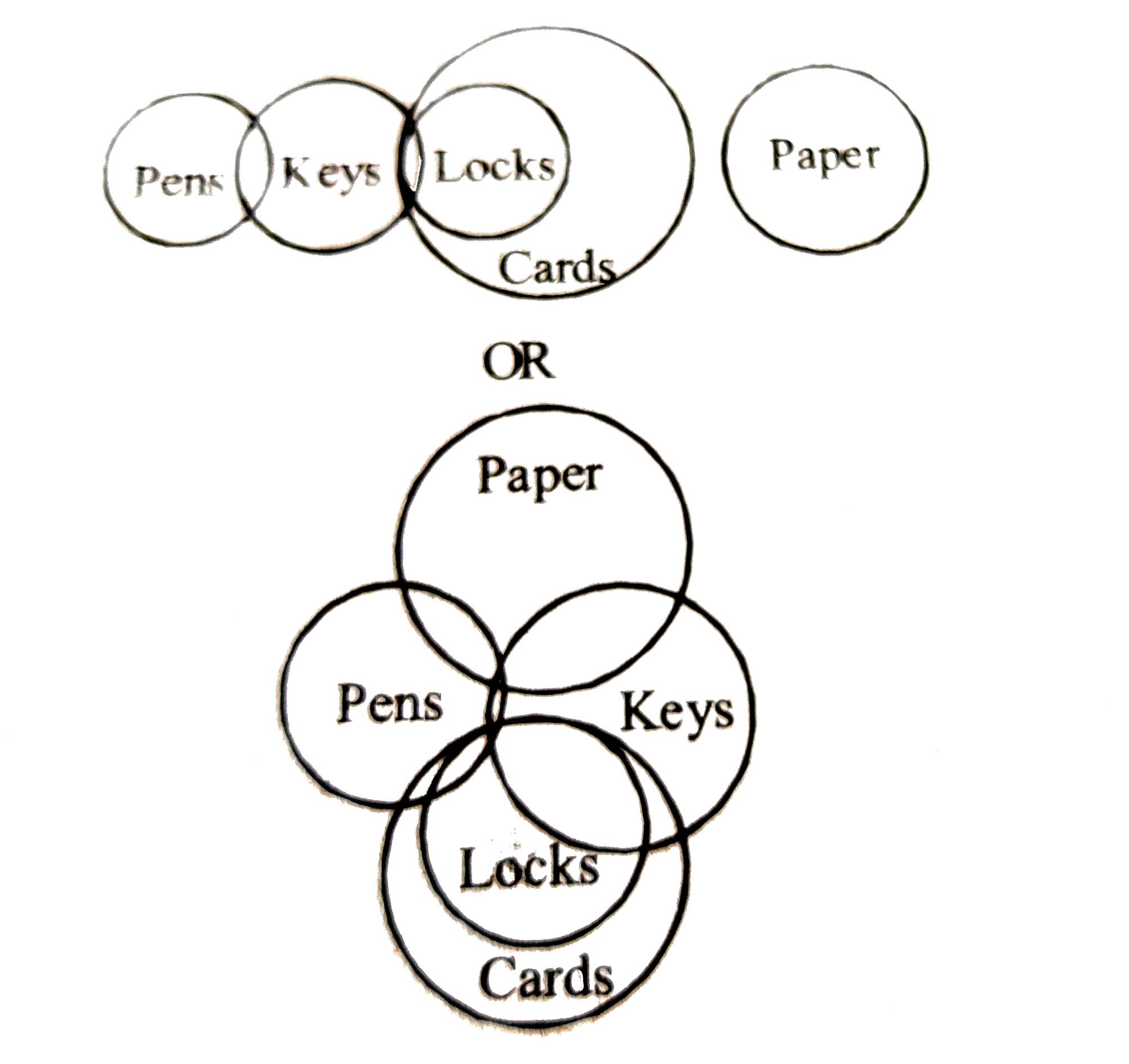 CONCLUSION I : TRUE II. True III. True HENCE, All conclusion Follow |
|
| 1153. |
Eight girls Megha,Swati,Rekha,Priya,Anjali,Rani,Neha,Ritu are sitting around a circular table such that five of themare facing towards the centre and the rest are facing away from the centre. Three persons are sitting between Rani and Ritu and faces opposite direction to rani. Megha sits 3ed to the left of Rekha. neha is one of the neighbour of anjali. two persons sit between neha and Swati, who is not neighbour of Ritu. Neha does not face Rekha. neha and megha face same direction but opposite to rani. What is the position of anjali with respect to Megha ? |
|
Answer» immediate RIGHT 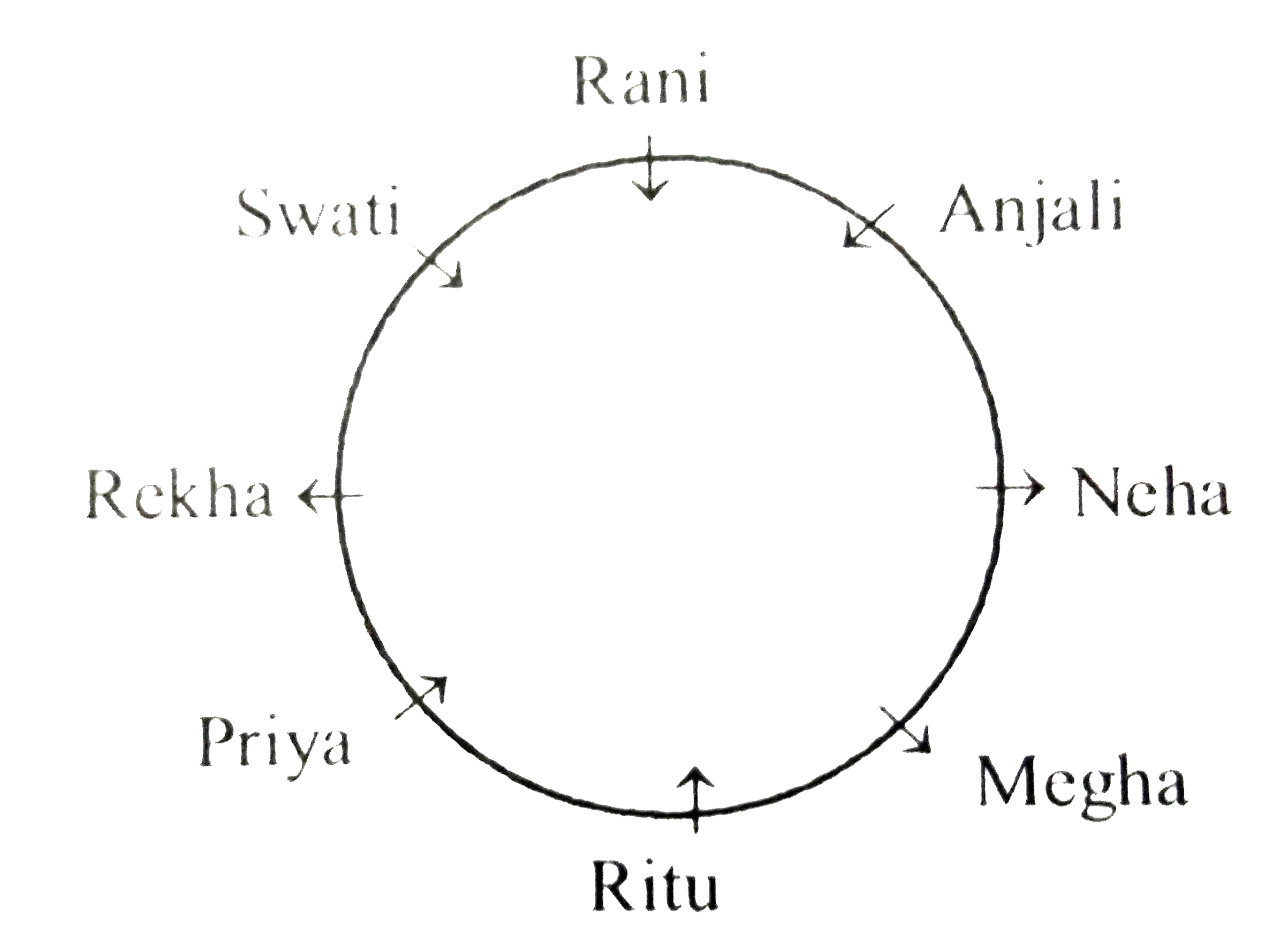
|
|
| 1154. |
(i) 'PxxQ' means 'P is the brother of Q'. (ii) 'P div Q' means 'P is the sister of Q '. (iii) 'P+Q' means 'P is the father of Q'. (iv) 'P-Q' means 'P is the mother of Q'. How is D related to T in the expression : H +T div R-D? |
|
Answer» NEPHEW 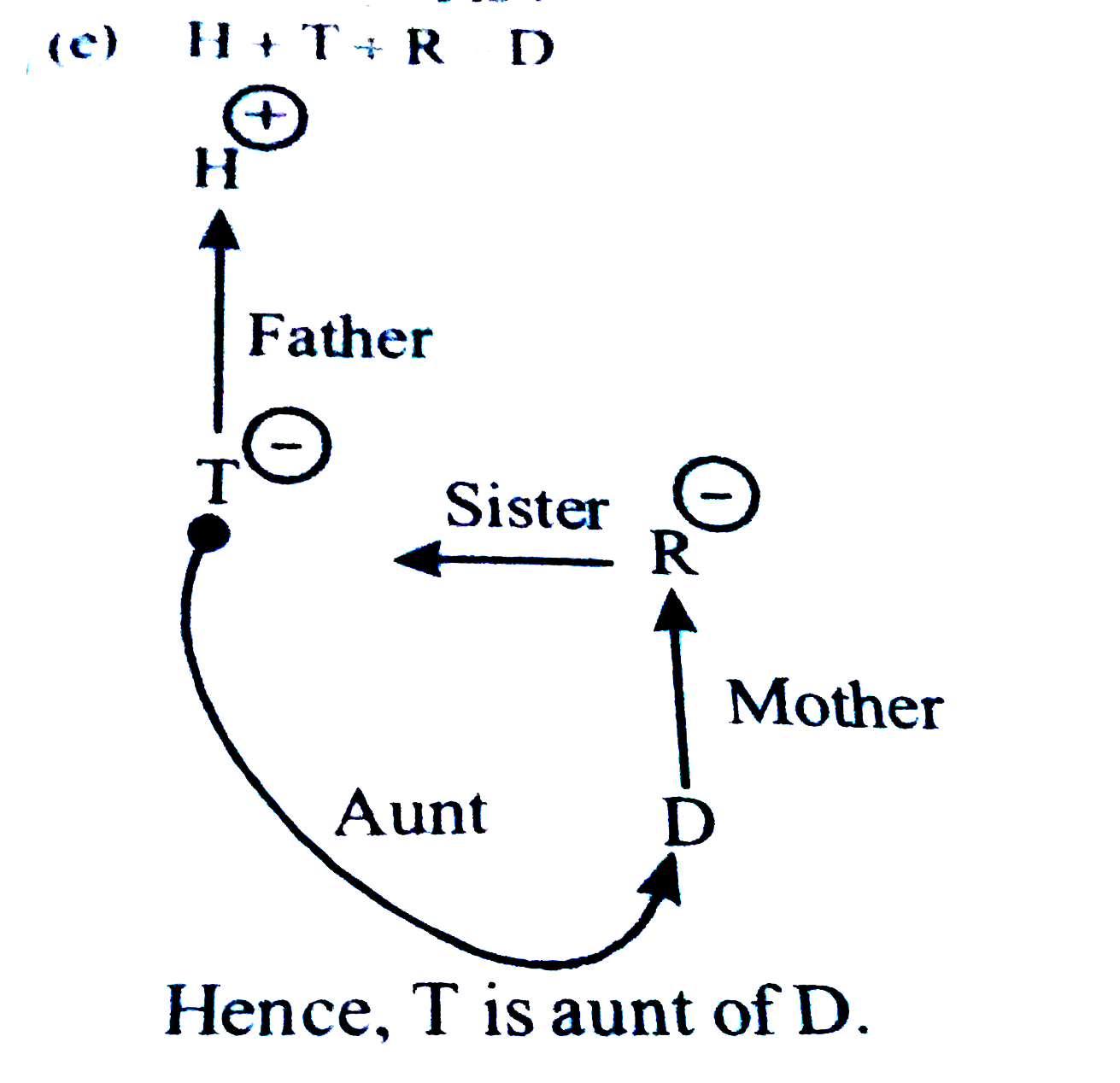 Hence, T is AUNT of D . |
|
| 1155. |
(i) 'PxxQ' means 'P is the brother of Q'. (ii) 'P div Q' means 'P is the sister of Q '. (iii) 'P+Q' means 'P is the father of Q'. (iv) 'P-Q' means 'P is the mother of Q'. Which of the following represent 'M is nephew of N' ? |
|
Answer» `N-K+M` 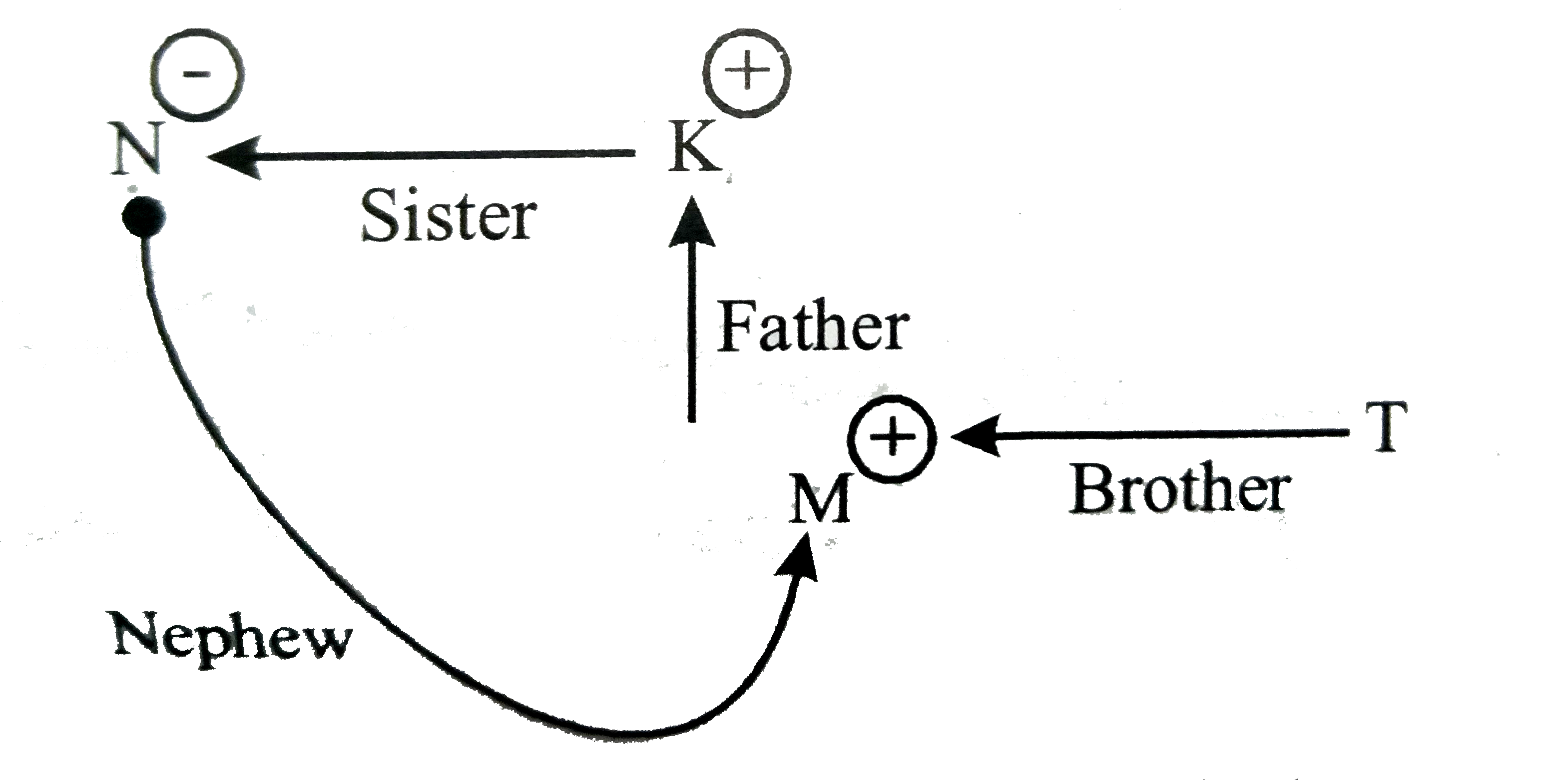 Hence , M is Nephew of N. |
|
| 1156. |
The rate of violent crime in this state is upto 30% from last year. The fault lies entirely in our system of justice. Recently our judges' sentences have been so lenient that criminals can now do almost anything without fear of a long prison term. The argument above would be weakened ifit were true that |
|
Answer» 85% of the other States in the nation have lower crime RATES than does this state |
|
| 1157. |
There are seven boys i.e. Ajay, Rohit, Shubham, Vikas, Sumit, Rajesh and Gopal. They all belongs to the different cities i.e. Kolkata, Mumbai, Chennai, Pune, Lucknow, Ahmedabad and Delhi but not necessarilyin the same order. Shubam belongs to Pune. Neither Ajay nor Rajesh belongs to kolkata. Rohit belongs to Ahmedabad. Vikas does not belongs to kolkata and lucknow. gopal belongs to Mumbai. Ajay does not belongs to lucknow and Chennai. Ajay belongs to which of the following city ? |
|
Answer» Delhi 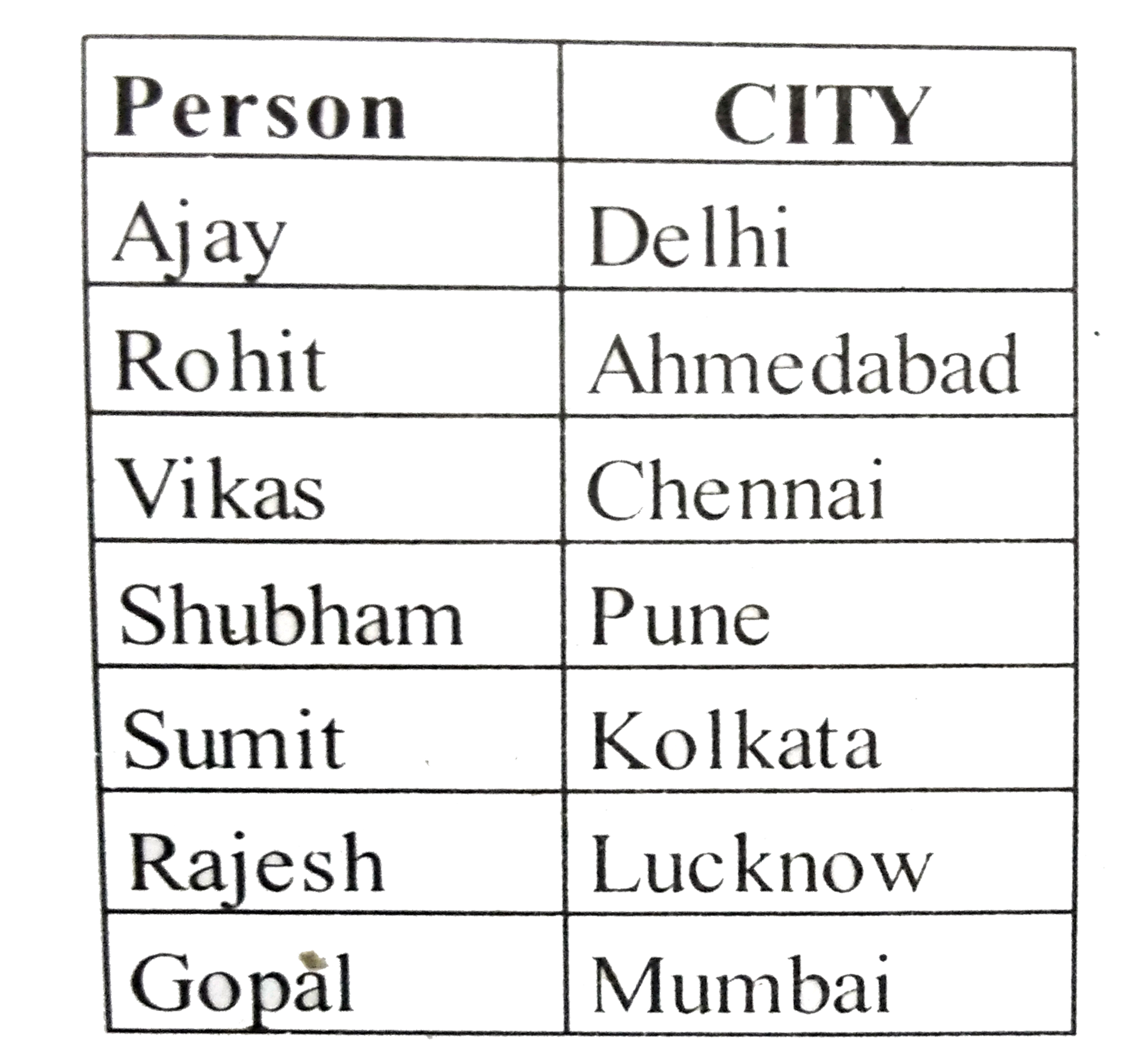
|
|
| 1158. |
Statement : Many people have encroached into the government property and built their houses and business establishments. Courses of action : I. The governmentshould take immediate steps to remove all unauthorised constructions on government land. II. All the encroachers should immediately be put behind bars and also be slapped with a hefty fine. |
|
Answer» If only course of action I follows |
|
| 1159. |
There are seven boys i.e. Ajay, Rohit, Shubham, Vikas, Sumit, Rajesh and Gopal. They all belongs to the different cities i.e. Kolkata, Mumbai, Chennai, Pune, Lucknow, Ahmedabad and Delhi but not necessarilyin the same order. Shubam belongs to Pune. Neither Ajay nor Rajesh belongs to kolkata. Rohit belongs to Ahmedabad. Vikas does not belongs to kolkata and lucknow. gopal belongs to Mumbai. Ajay does not belongs to lucknow and Chennai. Which of the following statement is true ? |
|
Answer» AJAY BELONGS to Chennai 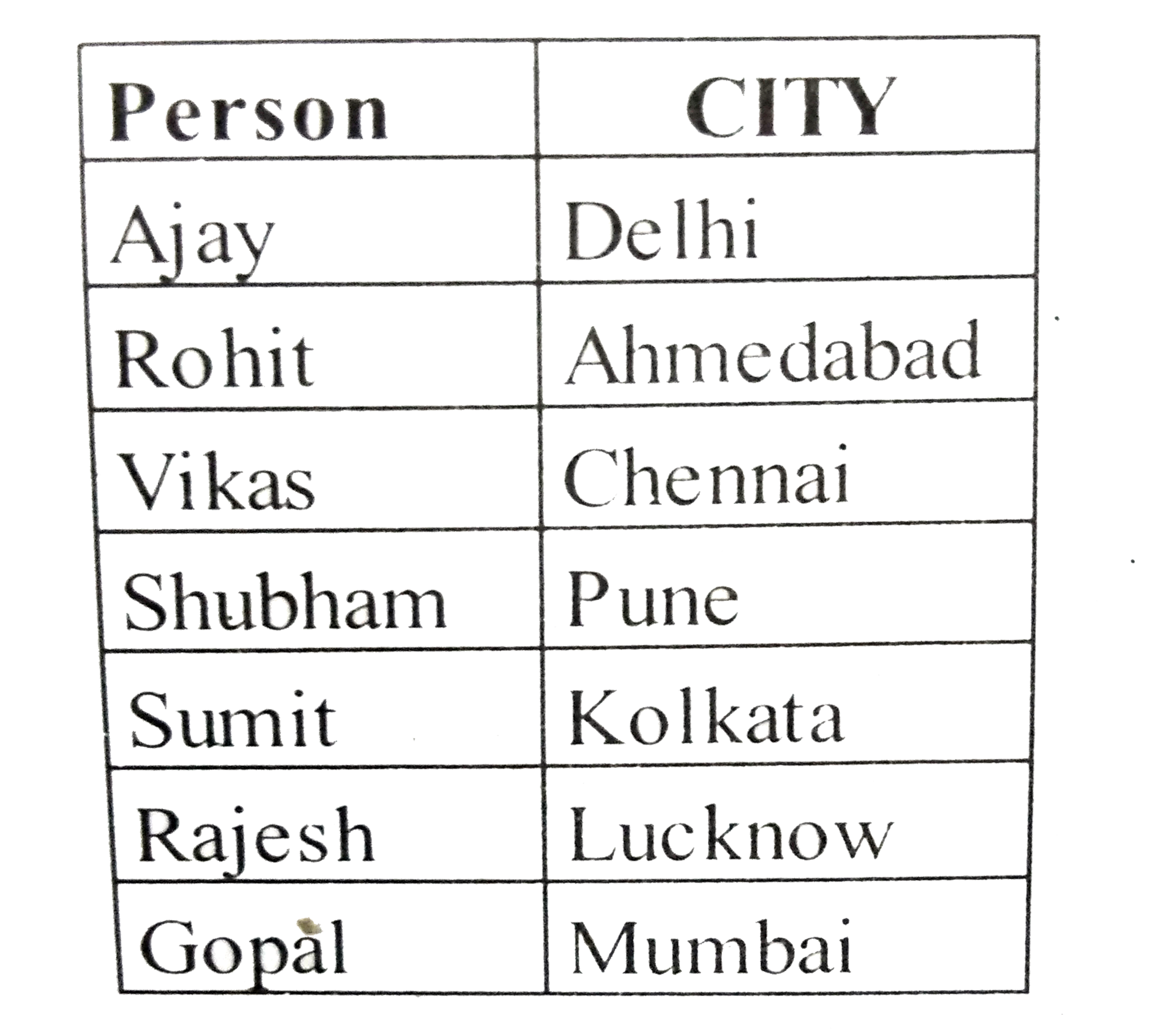
|
|
| 1160. |
There are seven boys i.e. Ajay, Rohit, Shubham, Vikas, Sumit, Rajesh and Gopal. They all belongs to the different cities i.e. Kolkata, Mumbai, Chennai, Pune, Lucknow, Ahmedabad and Delhi but not necessarilyin the same order. Shubam belongs to Pune. Neither Ajay nor Rajesh belongs to kolkata. Rohit belongs to Ahmedabad. Vikas does not belongs to kolkata and lucknow. gopal belongs to Mumbai. Ajay does not belongs to lucknow and Chennai. Who among the following belongs to Kolkata ? |
|
Answer» Ajay 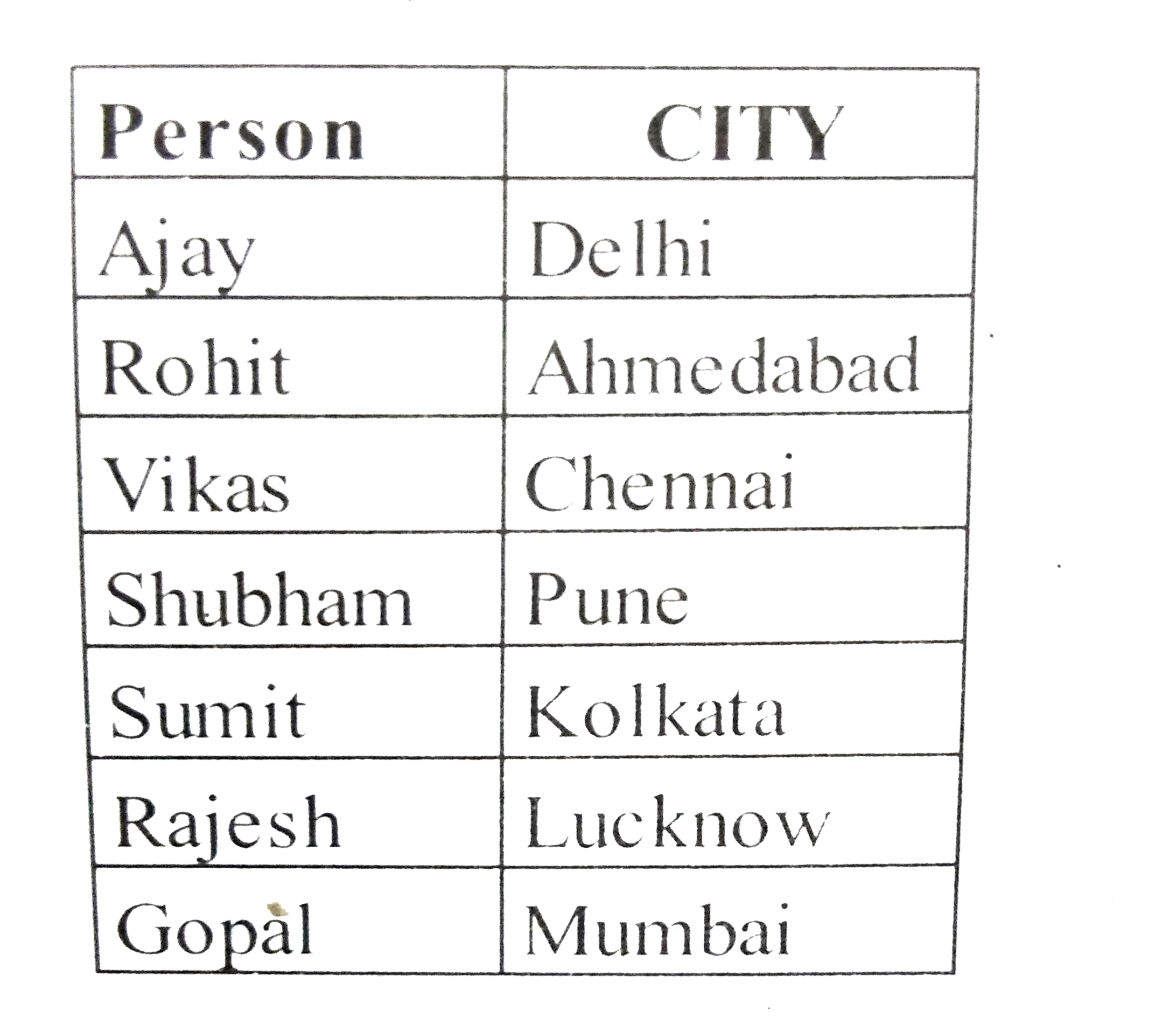
|
|
| 1161. |
(A)The english medium school in the locality has decided to admit only those students who reside in area. Where the school is located from the next academic session. (B) Many school in the city admit students residing anywhere within the city limit. |
|
Answer» if statement (A) is the CAUSE and statement (B) is its effect |
|
| 1162. |
Statements: Some cameras are calculators Some calculators are diaries All notebook are diaries All diaries are computers. Conclusions: I. Some notebooks are calculators II. Some calculators are computers III. All notebooks are computers IV. Some diaries are cameras |
|
Answer» NONE FOLLOWS 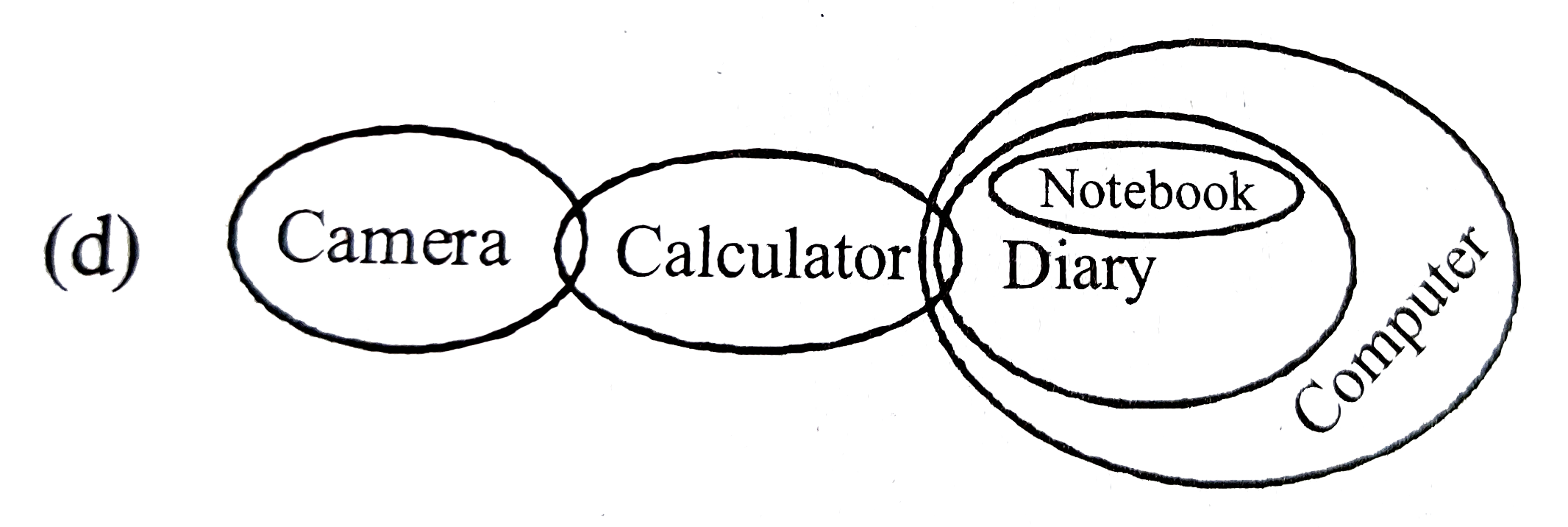 So, only II and III follow |
|
| 1163. |
I. The road traffic between the two towns in the state has been disrupted since last week. II. The rail traffic between the two towns in the state has been disrupted since last week. |
|
Answer» if statement (A) is the CAUSE and statement (B) is its effect |
|
| 1164. |
Vikas_walked 10 metres towards North, took a left turn and walked 15 metres, and again took a left turn and walked 10 metres and stopped walking. Towards which direction was he facing when he stopped walking? |
|
Answer» South 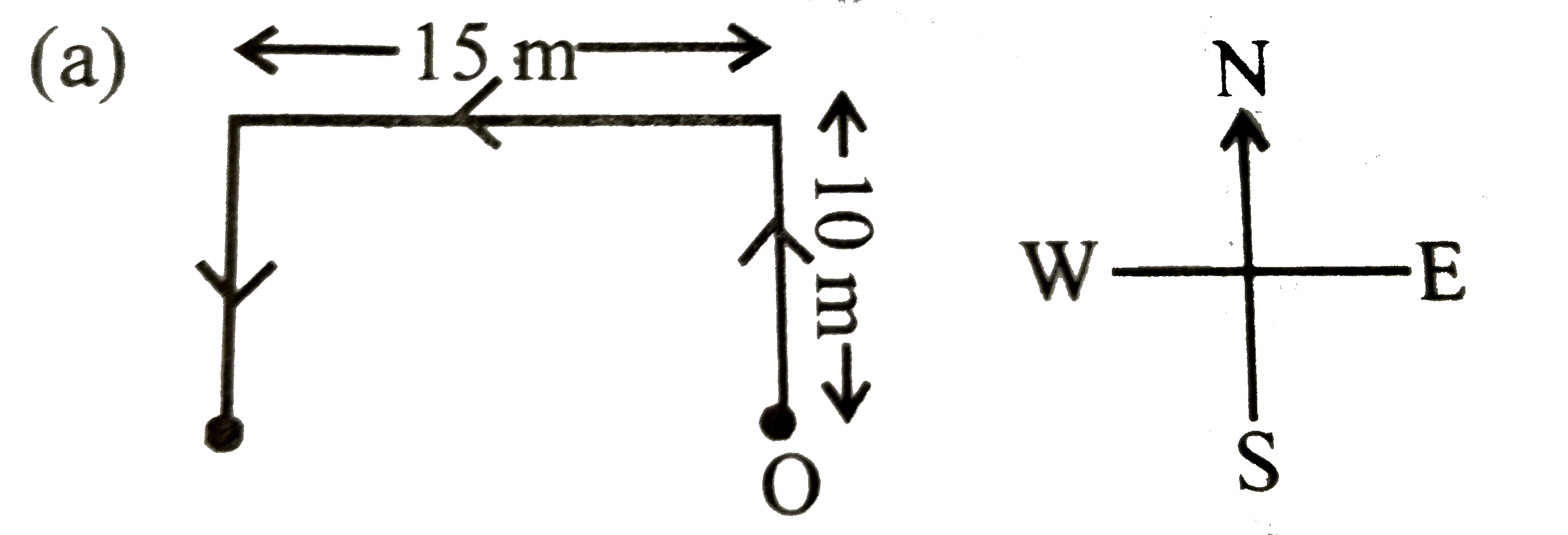
|
|
| 1165. |
Statements: Some books are pens Some pens are muttons Some mutton are buttons Conclusions: I Some buttons are pens II. Some muttons are books |
|
Answer» If only CONCLUSION I FOLLOWS  So, Neither I nor II follows |
|
| 1166. |
612 589 743 468 297 If two is added to the first digit of each of the numbers, how many numbers thus formed will be completely divisible by three? |
|
Answer» None 743 `rArr` 943, 468 `rArr` 668, 297`rArr` 497 `(812)/3=270.66, (789)/3=263,` `(943)/3=314.33, (668)/3=222.66,` `(497)/3=165.66` |
|
| 1167. |
Eight people are sitting in two parallel rows containing four people each, in such a way that there is an equal distance between adjacent persons. In row-1 A, B, C and D are seated (but not necessarily in the same order) and all of them are facing North. In row-2 P, Q, R and S are seated (but not necessarily in the same order) and all of them are facing South. Therefore, in the given seating arrangement each member seated in a row faces another member of the other row.S sits second to right of Q. A faces the immediate neighbour of S. Only one person sits between A and C. P does not face A.B is not an immediate neighbour of A.Who amongst the following faces C ? |
Answer» Solution : P FACES Q |
|
| 1168. |
Eight people are sitting in two parallel rows containing four people each, in such a way that there is an equal distance between adjacent persons. In row-1 A, B, C and D are seated (but not necessarily in the same order) and all of them are facing North. In row-2 P, Q, R and S are seated (but not necessarily in the same order) and all of them are facing South. Therefore, in the given seating arrangement each member seated in a row faces another member of the other row.S sits second to right of Q. A faces the immediate neighbour of S. Only one person sits between A and C. P does not face A.B is not an immediate neighbour of A.Which of the following is true regarding D ? |
|
Answer» (a) D sits at ONE of the extrem ENDS of the line  D sits third from the left or SECOND from the right A sits to the immediate right of D S faces D A, the immediate neighbour of D and faces R |
|
| 1169. |
Eight people are sitting in two parallel rows containing four people each, in such a way that there is an equal distance between adjacent persons. In row-1 A, B, C and D are seated (but not necessarily in the same order) and all of them are facing North. In row-2 P, Q, R and S are seated (but not necessarily in the same order) and all of them are facing South. Therefore, in the given seating arrangement each member seated in a row faces another member of the other row.S sits second to right of Q. A faces the immediate neighbour of S. Only one person sits between A and C. P does not face A.B is not an immediate neighbour of A.Who amongst the following faces R ? |
Answer» Solution :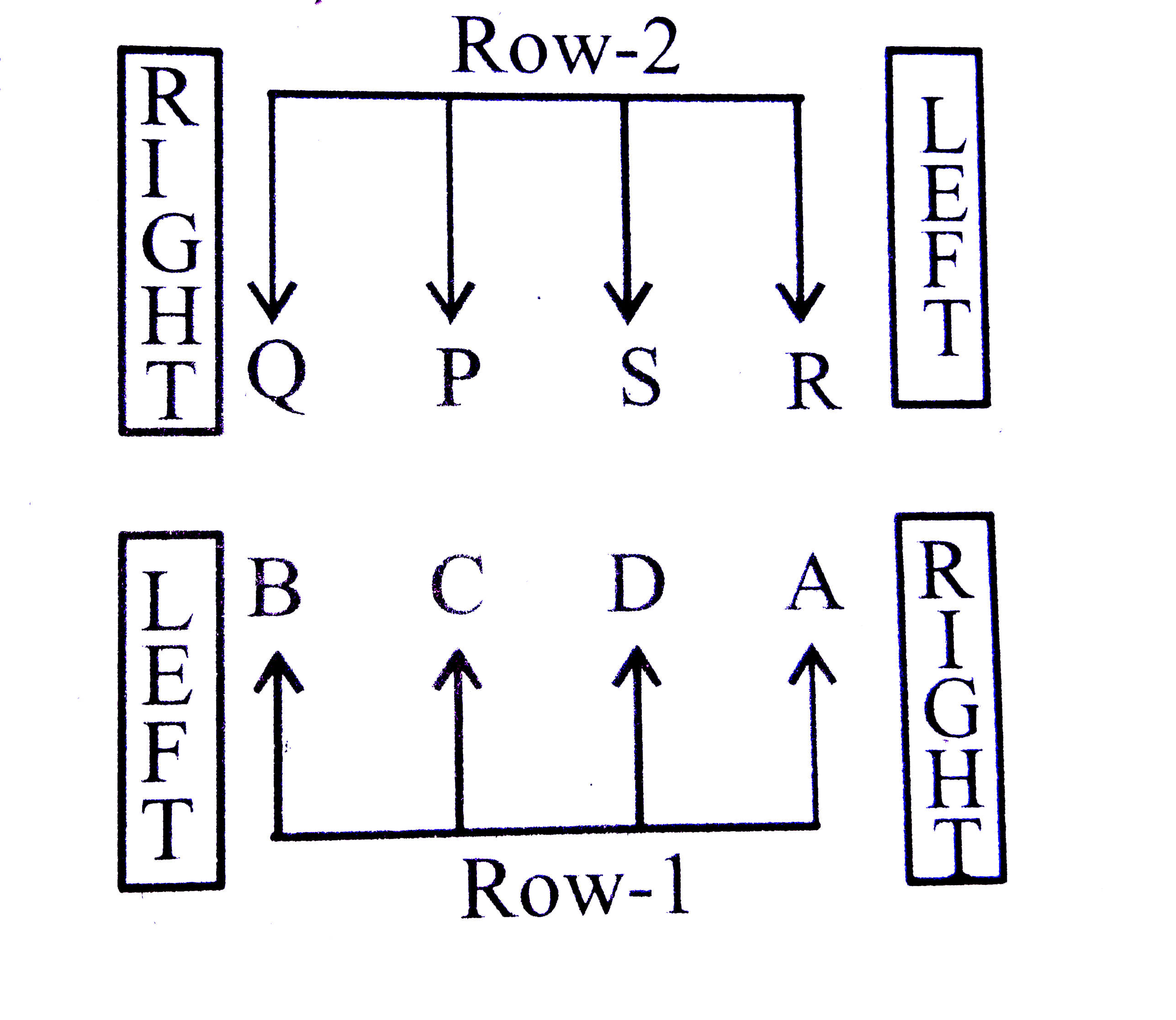 A FACES R |
|
| 1170. |
Eight people are sitting in two parallel rows containing four people each, in such a way that there is an equal distance between adjacent persons. In row-1 A, B, C and D are seated (but not necessarily in the same order) and all of them are facing North. In row-2 P, Q, R and S are seated (but not necessarily in the same order) and all of them are facing South. Therefore, in the given seating arrangement each member seated in a row faces another member of the other row.S sits second to left of Q. A faces the immediate neighbour of S. Only one person sits between A and C. P does not face A.B is not an immediate neighbour of A. Three of the following four are alike in a certain way based on the given seating arrangement and thus form a group. Which is the one tha does not belong to that group ? |
|
Answer» A 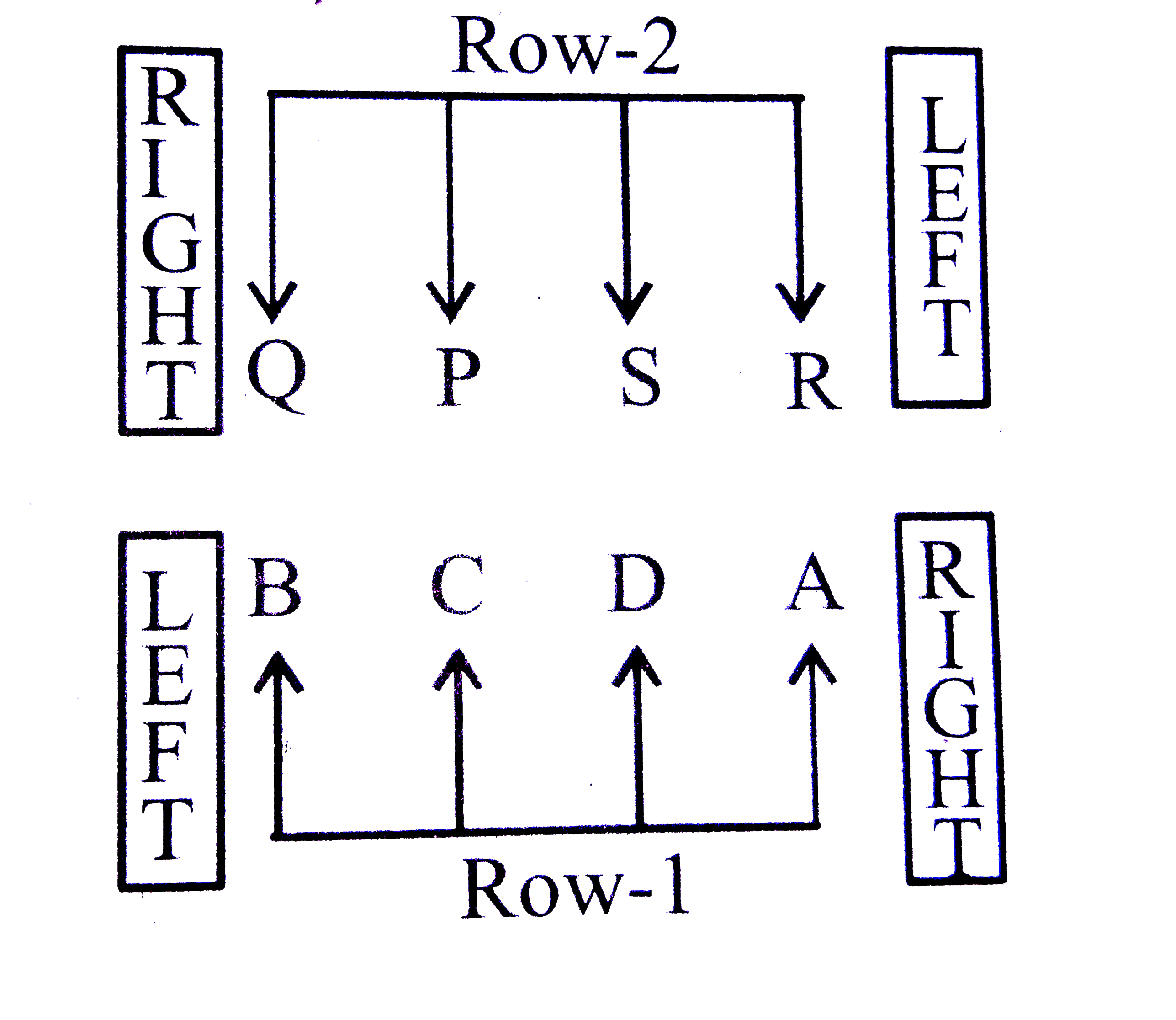 Except S, all OTHERS are SEATED at the extreme ends of LINES |
|
| 1171. |
Eight people are sitting in two parallel rows containing four people each, in such a way that there is an equal distance between adjacent persons. In row-1 A, B, C and D are seated (but not necessarily in the same order) and all of them are facing North. In row-2 P, Q, R and S are seated (but not necessarily in the same order) and all of them are facing South. Therefore, in the given seating arrangement each member seated in a row faces another member of the other row.S sits second to right of Q. A faces the immediate neighbour of S. Only one person sits between A and C. P does not face A.B is not an immediate neighbour of A.who amongst the following sits to the immediate right of the person who faces C ? |
Answer» Solution :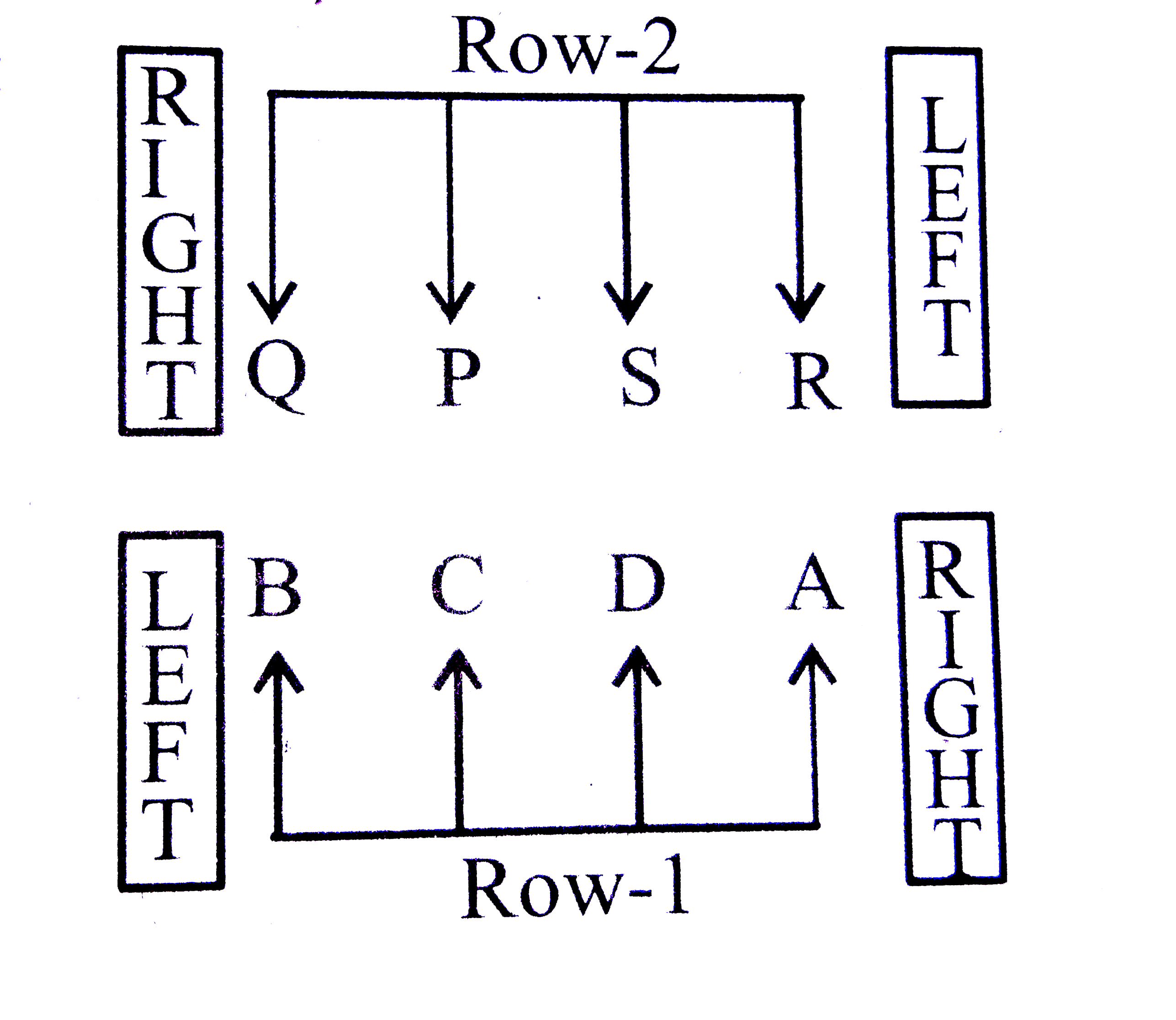 P faces C and Q is to the immediate right of P |
|
| 1172. |
Eight people are sitting in two parallel rows containing four people each, in such a way that there is an equal distance between adjacent persons. In row-1 P, Q, R and S are seated (but not necessarily in the same order) and all of them are facing south. In row-2 A, B, C and D are seated (but not necessarily in the same order) and all of them are facing north. Therefore, in the given seating arrangement each member seated in a row faces another member of the other row. R sits second to the right of P. A is an immediate neighbor of the person who faces R. Q sits second to left of the person who faces A. Only one person sits between B and C. C does not face P. C does not sit at any of the extreme ends of the line. Who amongst the following faces the person who sits exactly between B and C ? |
Answer» Solution :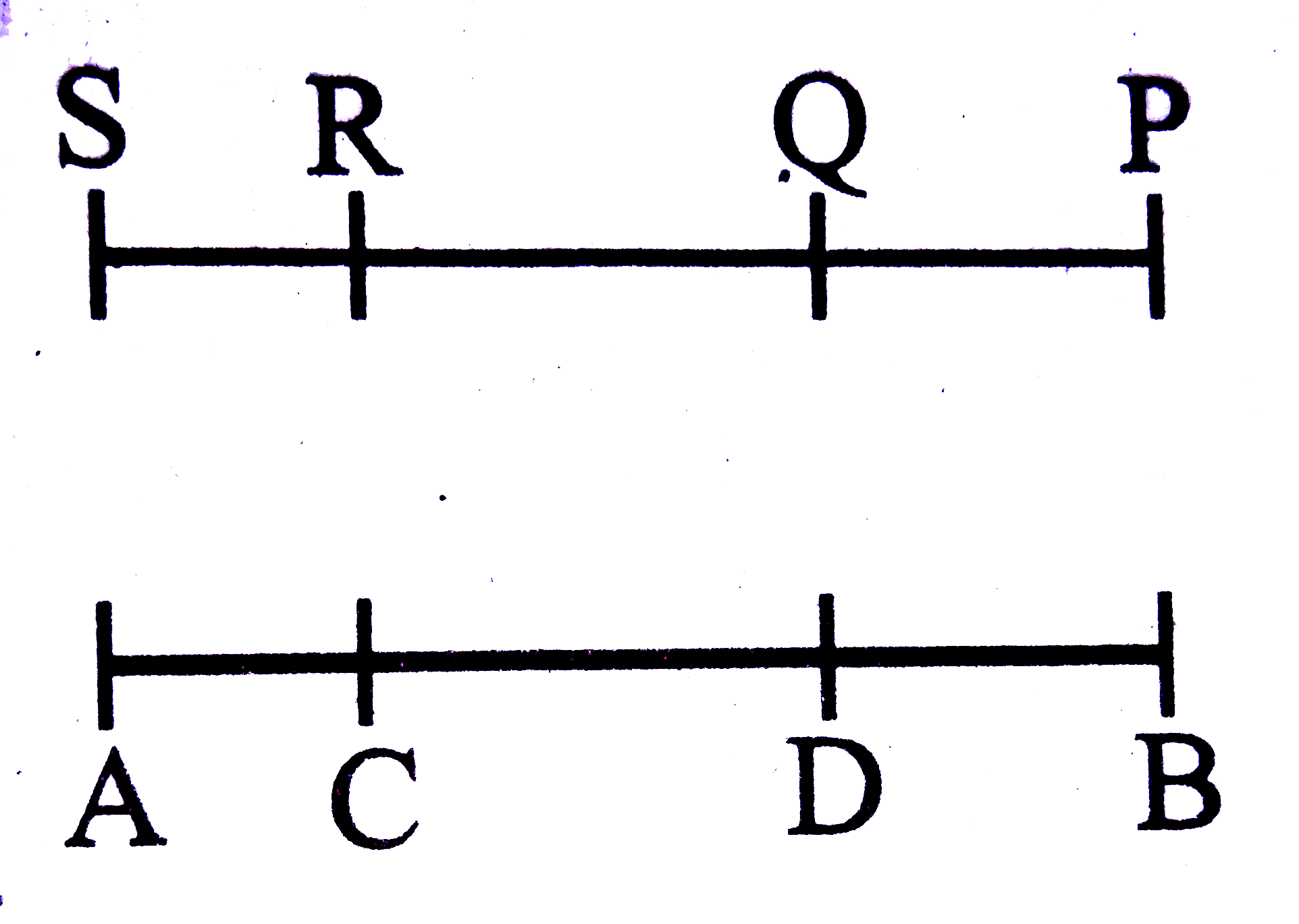
|
|
| 1173. |
Eight people are sitting in two parallel rows containing four people each, in such a way that there is an equal distance between adjacent persons. In row-1 P, Q, R and S are seated (but not necessarily in the same order) and all of them are facing south. In row-2 A, B, C and D are seated (but not necessarily in the same order) and all of them are facing north. Therefore, in the given seating arrangement each member seated in a row faces another member of the other row. R sits second to the right of P. A is an immediate neighbor of the person who faces R. Q sits second to left of the person who faces A. Only one person sits between B and C. C does not face P. C does not sit at any of the extreme ends of the line. Who amongst the following faces Q ? |
|
Answer» A 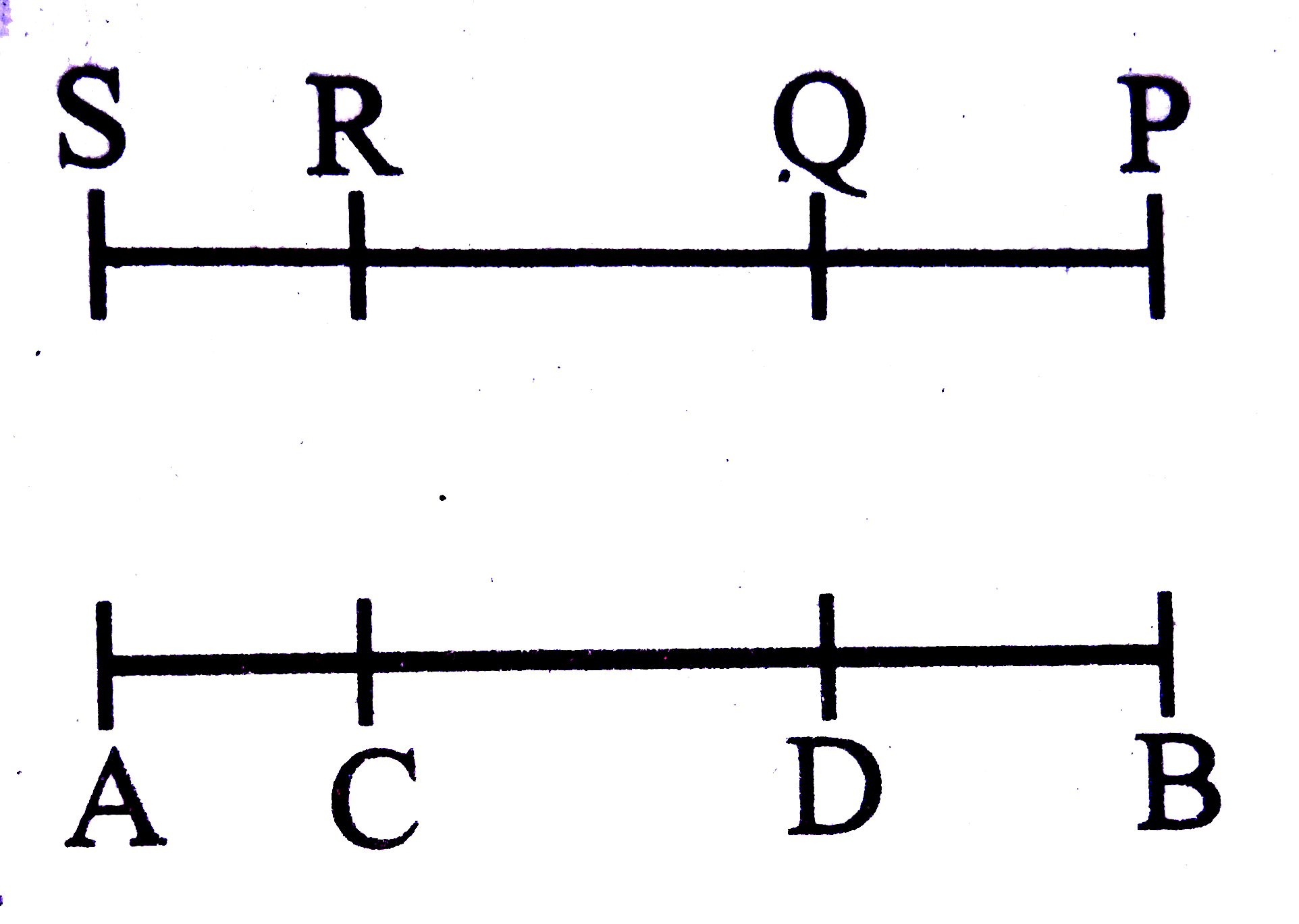
|
|
| 1174. |
Eight people are sitting in two parallel rows containing four people each, in such a way that there is an equal distance between adjacent persons. In row-1 P, Q, R and S are seated (but not necessarily in the same order) and all of them are facing south. In row-2 A, B, C and D are seated (but not necessarily in the same order) and all of them are facing north. Therefore, in the given seating arrangement each member seated in a row faces another member of the other row. R sits second to the right of P. A is an immediate neighbor of the person who faces R. Q sits second to left of the person who faces A. Only one person sits between B and C. C does not face P. C does not sit at any of the extreme ends of the line. Which of the following is trueregarding S ? |
|
Answer» S sits EXACTLY between R and P 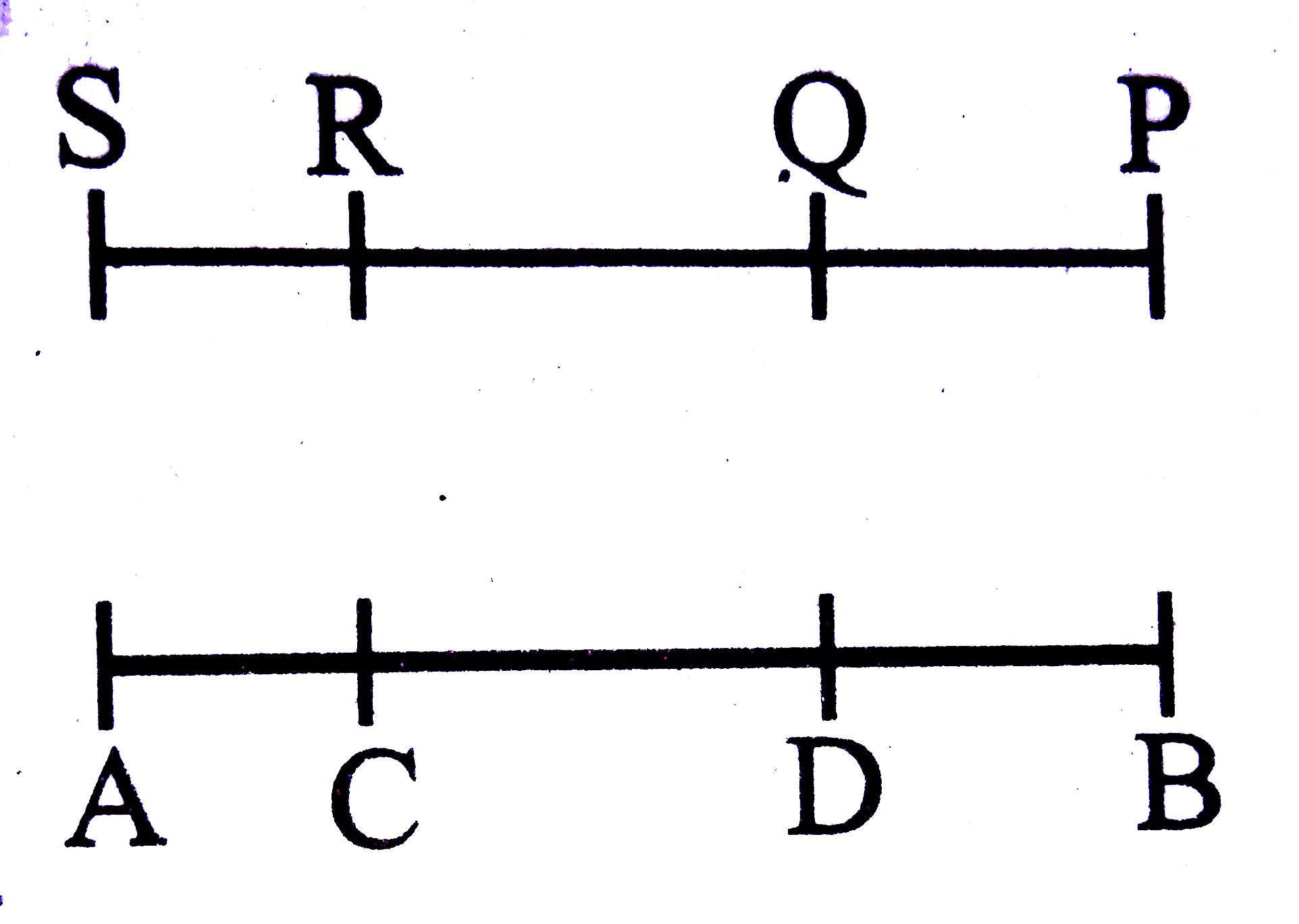
|
|
| 1175. |
How many such pairs of letters are there in the word 'DAREDEVIL' each of which has as many letters between them in the word as in the English alphabet series ? (in both forward and backward directions) |
|
Answer» None 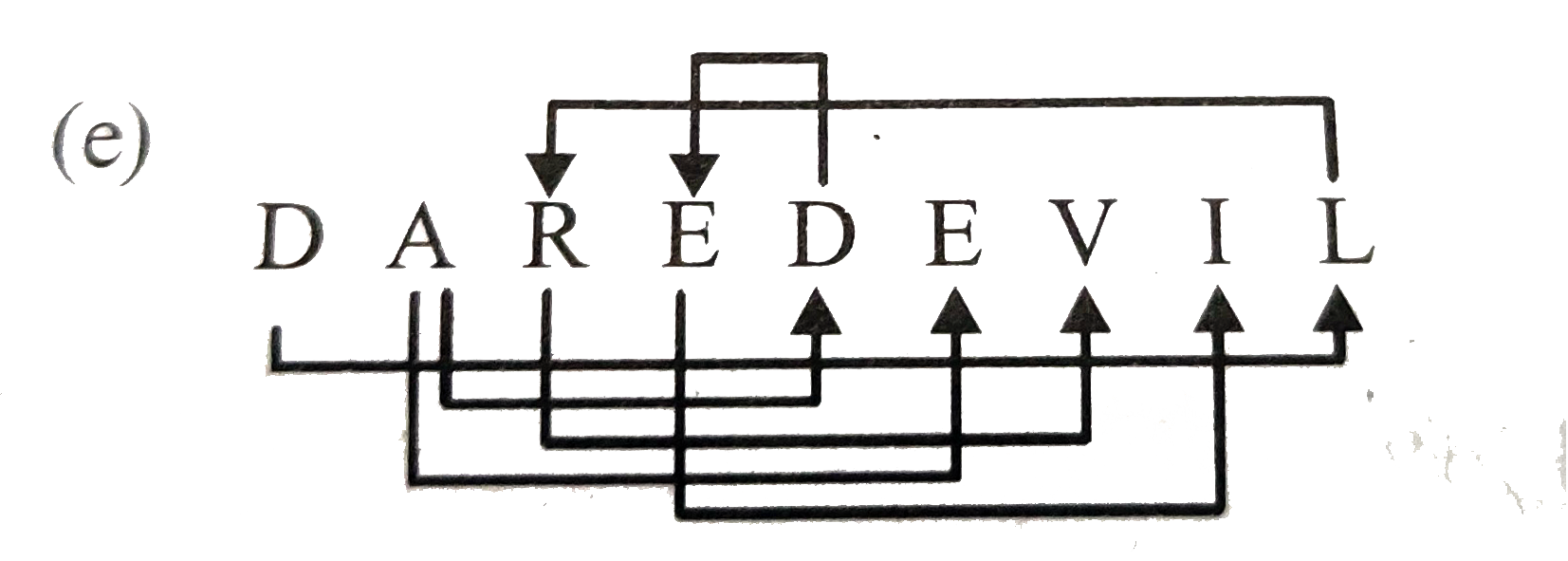 There are SEVEN such PAIRS. |
|
| 1176. |
(A)Government has increased the procurement price of kharif crops by about ten per cent for the current year. (B)Inadequate monsoon rainfall has created a drought like situation in many parts of the counrty. |
|
Answer» if statement (A) is the cause and statement (B) is its effect |
|
| 1177. |
Statements: No hardware is software. Some software is keyboard. All mouse are software Conclusions: (I) No mouse is a hardware (II) Some hardware are mouse |
|
Answer» If only CONCLUSION I FOLLOWS  So, only I follows |
|
| 1178. |
Statements: All rings are circles All squares are rings. No.ellipse is a circle. Conclusions: I. Some rings being ellipse is a possibility. II. At least some circles are squres. |
|
Answer» If only conclusion I follows 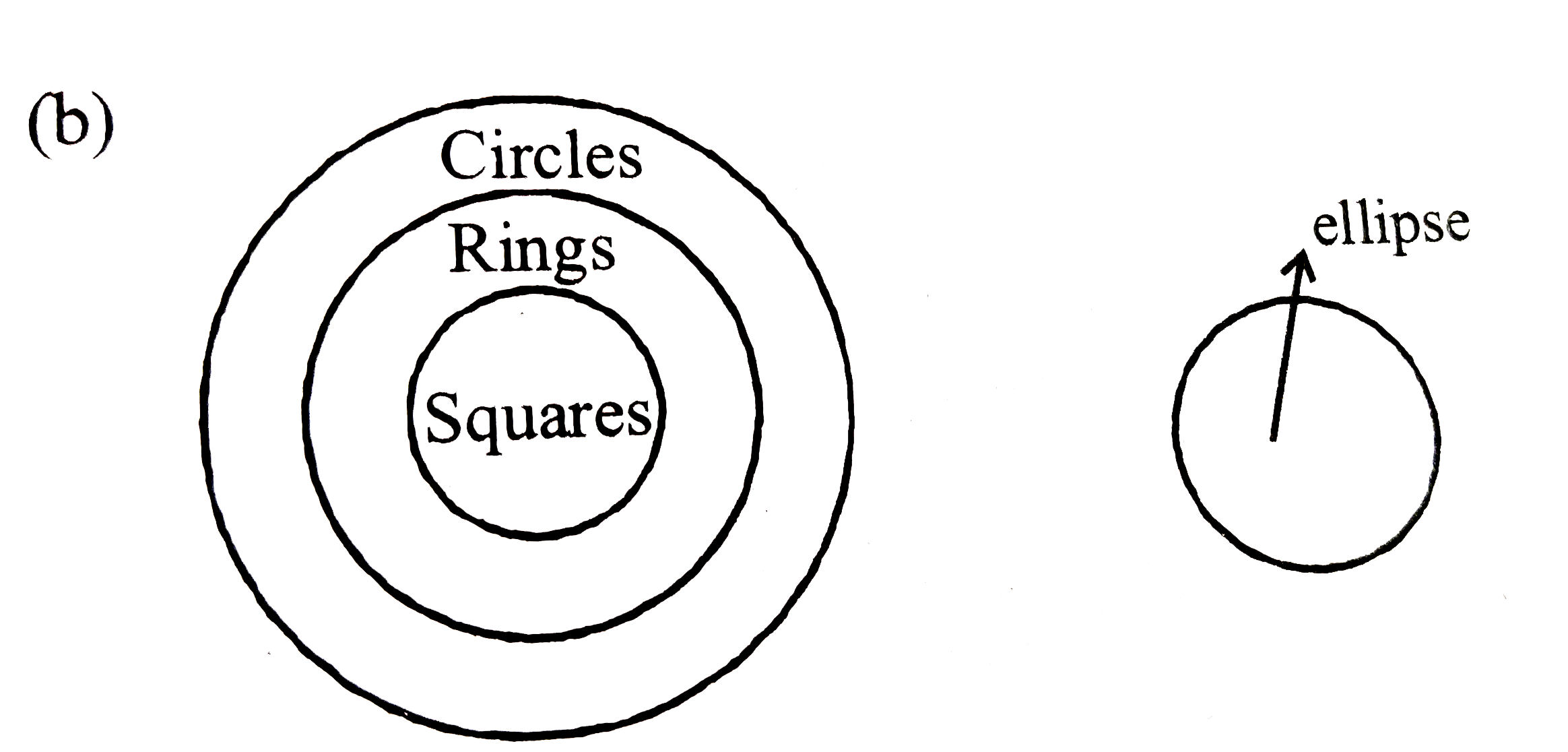 Conclusion I : FALSE conclusion II : True |
|
| 1179. |
M 3 R A T 1 E J $ K @ F U 5 4 V 1 6 © D 8 * H N 7 $ 2 WThree of the following four are alike in a certain way based on the~ positions m the above arrangement and so form a group. Which is the one that does not belong to that group ? |
|
Answer» Solution :`T OVERSET(+2)rarrE overset(-4)rarrR` `U overset(+2)rarr4 overset( -4)rarr"@"` `6 overset(+2)rarrDoverset(-4)rarrV` `Joverset(-2)rarr1overset(+4)rarrK` `N overset(+2)rarrdelta overset(-4)rarr***` |
|
| 1180. |
Mark answer ( a) If the inference is "definitely true" i.e. it properly follows from the statement of facts given. Mark answer (b) If the inference is "probably true" though not "definitely true" in the light of the facts given. Mark answer (c) If the data is inadequate i.e. from the facts given, you cannot say whether the inference is likely to be true or false. Mark answer ( d) If the inference is "probably false" though not "definitely false" in the light of the fact given . Mark answer (e) If the inference is "definitely false" i.e., it can not possibly be drawn from the facts given or it contradicts the given facts. (Note: Each of the five questions has only one distinct answer i.e., no two questions can have the same answer. If you get the same answer for more than one question, consider both again and decide which one of the two would more definitely be that answer and in the same way review the others also). Cardiovascular disease is so prevalent that virtually all businesses are likely to have employees who suffer from, or may develop, this condition. Research shows that between 50-80 percent of all people who suffer a heart attack are able to return to work. However, this may not be possi ble if they have previously been involved in heavy physical work. In such cases, it may be possible to move the employee to lighter duties, with appropriate retraining where necessary. Similarly, high-pressure, stressful work, even where it does not involve physical activity, should also be avoided. Human Resource managers should be aware of the implications of job roles for employees with a cardiac condition. Heart disease can affect employees in any type of business |
|
Answer» |
|
| 1181. |
Mark answer ( a) If the inference is "definitely true" i.e. it properly follows from the statement of facts given. Mark answer (b) If the inference is "probably true" though not "definitely true" in the light of the facts given. Mark answer (c) If the data is inadequate i.e. from the facts given, you cannot say whether the inference is likely to be true or false. Mark answer ( d) If the inference is "probably false" though not "definitely false" in the light of the fact given . Mark answer (e) If the inference is "definitely false" i.e., it can not possibly be drawn from the facts given or it contradicts the given facts. (Note: Each of the five questions has only one distinct answer i.e., no two questions can have the same answer. If you get the same answer for more than one question, consider both again and decide which one of the two would more definitely be that answer and in the same way review the others also). Cardiovascular disease is so prevalent that virtually all businesses are likely to have employees who suffer from, or may develop, this condition. Research shows that between 50-80 percent of all people who suffer a heart attack are able to return to work. However, this may not be possi ble if they have previously been involved in heavy physical work. In such cases, it may be possible to move the employee to lighter duties, with appropriate retraining where necessary. Similarly, high-pressure, stressful work, even where it does not involve physical activity, should also be avoided. Human Resource managers should be aware of the implications of job roles for employees with a cardiac condition. Physical and stressful work definitely leads to a heart attack. |
|
Answer» |
|
| 1182. |
Mark answer ( a) If the inference is "definitely true" i.e. it properly follows from the statement of facts given. Mark answer (b) If the inference is "probably true" though not "definitely true" in the light of the facts given. Mark answer (c) If the data is inadequate i.e. from the facts given, you cannot say whether the inference is likely to be true or false. Mark answer ( d) If the inference is "probably false" though not "definitely false" in the light of the fact given . Mark answer (e) If the inference is "definitely false" i.e., it can not possibly be drawn from the facts given or it contradicts the given facts. (Note: Each of the five questions has only one distinct answer i.e., no two questions can have the same answer. If you get the same answer for more than one question, consider both again and decide which one of the two would more definitely be that answer and in the same way review the others also). Cardiovascular disease is so prevalent that virtually all businesses are likely to have employees who suffer from, or may develop, this condition. Research shows that between 50-80 percent of all people who suffer a heart attack are able to return to work. However, this may not be possi ble if they have previously been involved in heavy physical work. In such cases, it may be possible to move the employee to lighter duties, with appropriate retraining where necessary. Similarly, high-pressure, stressful work, even where it does not involve physical activity, should also be avoided. Human Resource managers should be aware of the implications of job roles for employees with a cardiac condition. Employees above the age of 50 are found to suffer from cardiovascular disease. |
|
Answer» |
|
| 1183. |
Mark answer ( a) If the inference is "definitely true" i.e. it properly follows from the statement of facts given. Mark answer (b) If the inference is "probably true" though not "definitely true" in the light of the facts given. Mark answer (c) If the data is inadequate i.e. from the facts given, you cannot say whether the inference is likely to be true or false. Mark answer ( d) If the inference is "probably false" though not "definitely false" in the light of the fact given . Mark answer (e) If the inference is "definitely false" i.e., it can not possibly be drawn from the facts given or it contradicts the given facts. (Note: Each of the five questions has only one distinct answer i.e., no two questions can have the same answer. If you get the same answer for more than one question, consider both again and decide which one of the two would more definitely be that answer and in the same way review the others also). Cardiovascular disease is so prevalent that virtually all businesses are likely to have employees who suffer from, or may develop, this condition. Research shows that between 50-80 percent of all people who suffer a heart attack are able to return to work. However, this may not be possi ble if they have previously been involved in heavy physical work. In such cases, it may be possible to move the employee to lighter duties, with appropriate retraining where necessary. Similarly, high-pressure, stressful work, even where it does not involve physical activity, should also be avoided. Human Resource managers should be aware of the implications of job roles for employees with a cardiac condition. Employees suffering from Cardiovascular diseases are unable to handle stressful situations. |
|
Answer» |
|
| 1184. |
Mark answer ( a) If the inference is "definitely true" i.e. it properly follows from the statement of facts given. Mark answer (b) If the inference is "probably true" though not "definitely true" in the light of the facts given. Mark answer (c) If the data is inadequate i.e. from the facts given, you cannot say whether the inference is likely to be true or false. Mark answer ( d) If the inference is "probably false" though not "definitely false" in the light of the fact given . Mark answer (e) If the inference is "definitely false" i.e., it can not possibly be drawn from the facts given or it contradicts the given facts. (Note: Each of the five questions has only one distinct answer i.e., no two questions can have the same answer. If you get the same answer for more than one question, consider both again and decide which one of the two would more definitely be that answer and in the same way review the others also). Cardiovascular disease is so prevalent that virtually all businesses are likely to have employees who suffer from, or may develop, this condition. Research shows that between 50-80 percent of all people who suffer a heart attack are able to return to work. However, this may not be possi ble if they have previously been involved in heavy physical work. In such cases, it may be possible to move the employee to lighter duties, with appropriate retraining where necessary. Similarly, high-pressure, stressful work, even where it does not involve physical activity, should also be avoided. Human Resource managers should be aware of the implications of job roles for employees with a cardiac condition. Employees who suffer from cardiovascular disease are mostly unable to return to work. |
|
Answer» |
|
| 1185. |
Statements: All colleges are buildings All buildings are concrete. Some concrete are strong Conclusions: I. Some colleges are strong II. At least some strong are concrete. |
|
Answer» If only CONCLUSION I follows 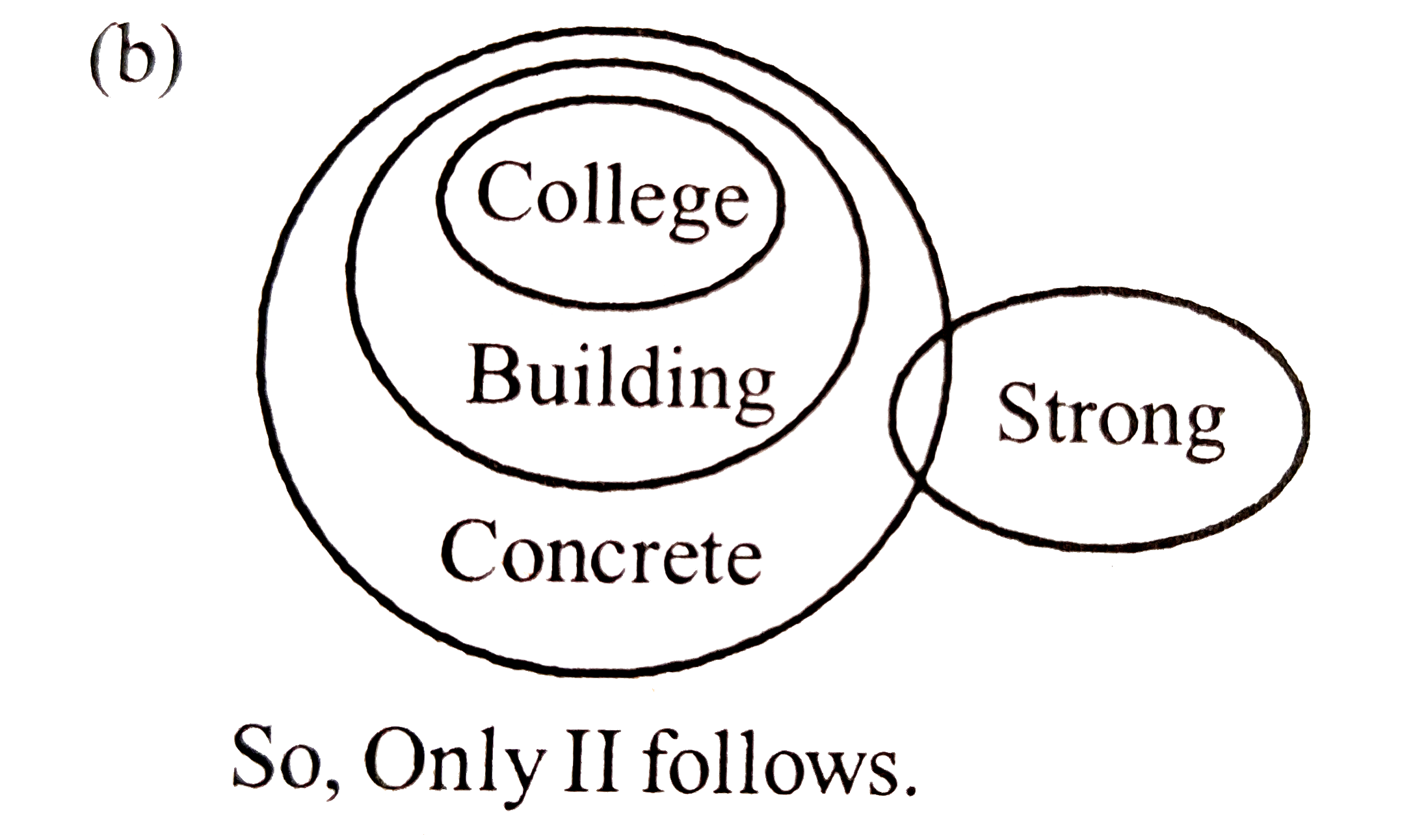 So, Only II FOLLOW |
|
| 1186. |
Six boys M,J,N,L,S,T are sitting in a row. Some of them are facing north while some of them are facing south. M sits second from one of the extreme end of the row. J sits third to the right of M. L is not an immediate neighbor of J and T. both the immediate neighbours of S faces opposite direction. both the immediate neighbors of T faces same direction. S sits second to the left of J. N sits to the right of L. L face north. N faces same direction as T. who is sitting 4th to the right of N? |
Answer» SOLUTION :
|
|
| 1187. |
Six boys M,J,N,L,S,T are sitting in a row. Some of them are facing north while some of them are facing south. M sits second from one of the extreme end of the row. J sits third to the right of M. L is not an immediate neighbor of J and T. both the immediate neighbours of S faces opposite direction. Both the immediate neighbors of T faces same direction. S sits second to the left of J. N sits right of L. L face north. N faces same direction as T. How many boys in the given arrangement are facing north ? |
Answer» Solution :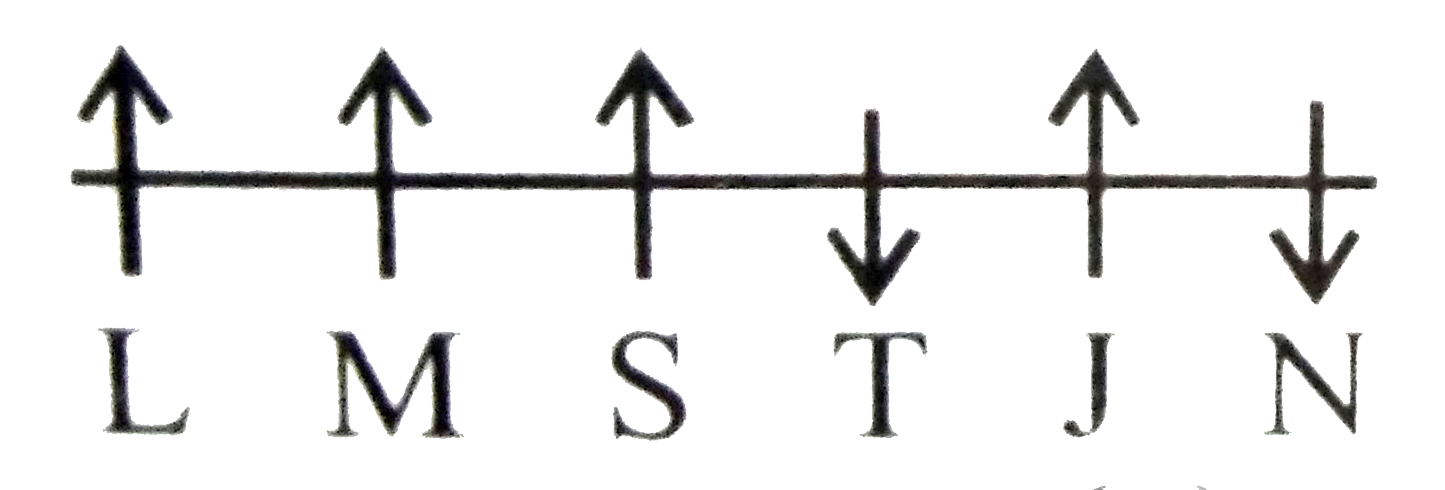
|
|
| 1188. |
Six boys M,J,N,L,S,T are sitting in a row. Some of them are facing north while some of them are facing south. M sits second from one of the extreme end of the row. J sits third to the right of M. L is not an immediate neighbor of J and T. both the immediate neighbours of S faces opposite direction. both the immediate neighbors of T faces same direction. S sits second to the left of J. N sits to the right of L. L face north. N faces same direction as T. Who amongst the following sits exactly between T and M? |
Answer» Solution :
|
|
| 1189. |
Six boys M,J,N,L,S,T are sitting in a row. Some of them are facing north while some of them are facing south. M sits second from one of the extreme end of the row. J sits third to the right of M. L is not an immediate neighbor of J and T. both the immediate neighbours of S faces opposite direction. both the immediate neighbors of T faces same direction. S sits second to the left of J. N sits to the right of L. L face north. N faces same direction as T. What is the position of N with respect to T ? |
|
Answer» Second to the LEFT 
|
|
| 1190. |
Six boys M,J,N,L,S,T are sitting in a row. Some of them are facing north while some of them are facing south. M sits second from one of the extreme end of the row. J sits third to the right of M. L is not an immediate neighbor of J and T. both the immediate neighbours of S faces opposite direction. both the immediate neighbors of T faces same direction. S sits second to the left of J. N sits to the right of L. L face north. N faces same direction as T. Four of the following five are alike in a certain way, and so form a group. which of the following does not belong to the group ? |
Answer» Solution :
|
|
| 1191. |
An organisation Hare Krishna printed different number of books in different years 1943,1956,1987,1998,2002 such that number of books printed are not same in any year. 66 books were printed in an odd numbered yearwhich is not 1943. the number of books printed in 1943 is 10 less than that printed in 1987 . 59 books were printed in an year before the year in which 61 books are printed but not immediate before. The number of books printed in 2002is 2 more than that printed in 1998 . In how many years the number of books printed are more that that printed in 1998 ? |
Answer» Solution :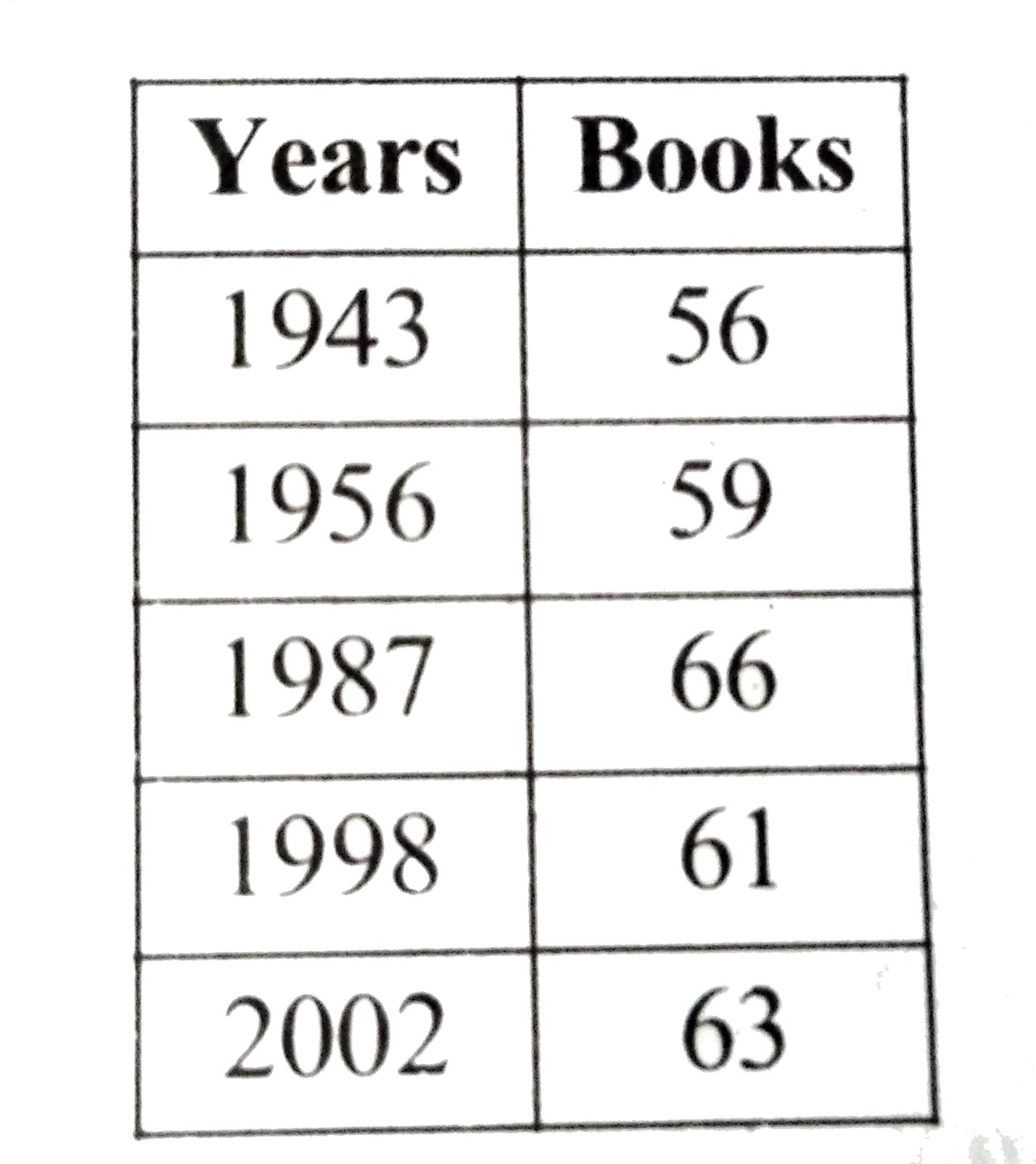
|
|
| 1192. |
An organisation Hare Krishna printed different number of books in different years 1943,1956,1987,1998,2002 such that number of books printed are not same in any year. 66 books were printed in an odd numbered yearwhich is not 1943. the number of books printed in 1943 is 10 less than that printed in 1987 . 59 books were printed in an year before the year in which 61 books are printed but not immediate before. The number of books printed in 2002is 2 more than that printed in 1998 . What is the difference between the number of books printed in 1956 and 2002 ? |
|
Answer» 7 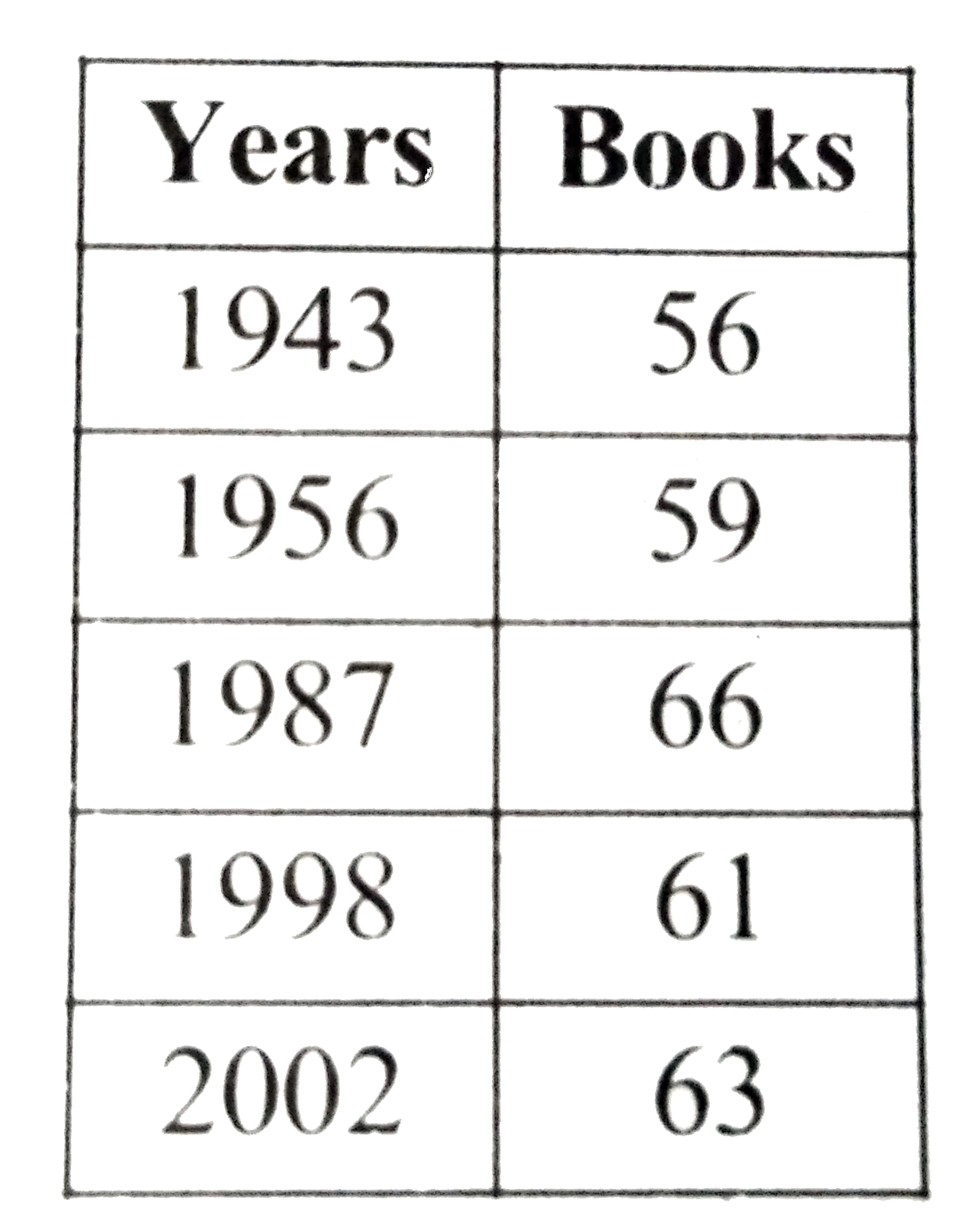
|
|
| 1193. |
An organisation Hare Krishna printed different number of books in different years 1943,1956,1987,1998,2002 such that number of books printed are not same in any year. 66 books were printed in an odd numbered yearwhich is not 1943. the number of books printed in 1943 is 10 less than that printed in 1987 . 59 books were printed in an year before the year in which 61 books are printed but not immediate before. The number of books printed in 2002is 2 more than that printed in 1998 . How many books were printed in 1943 ? |
|
Answer» 56 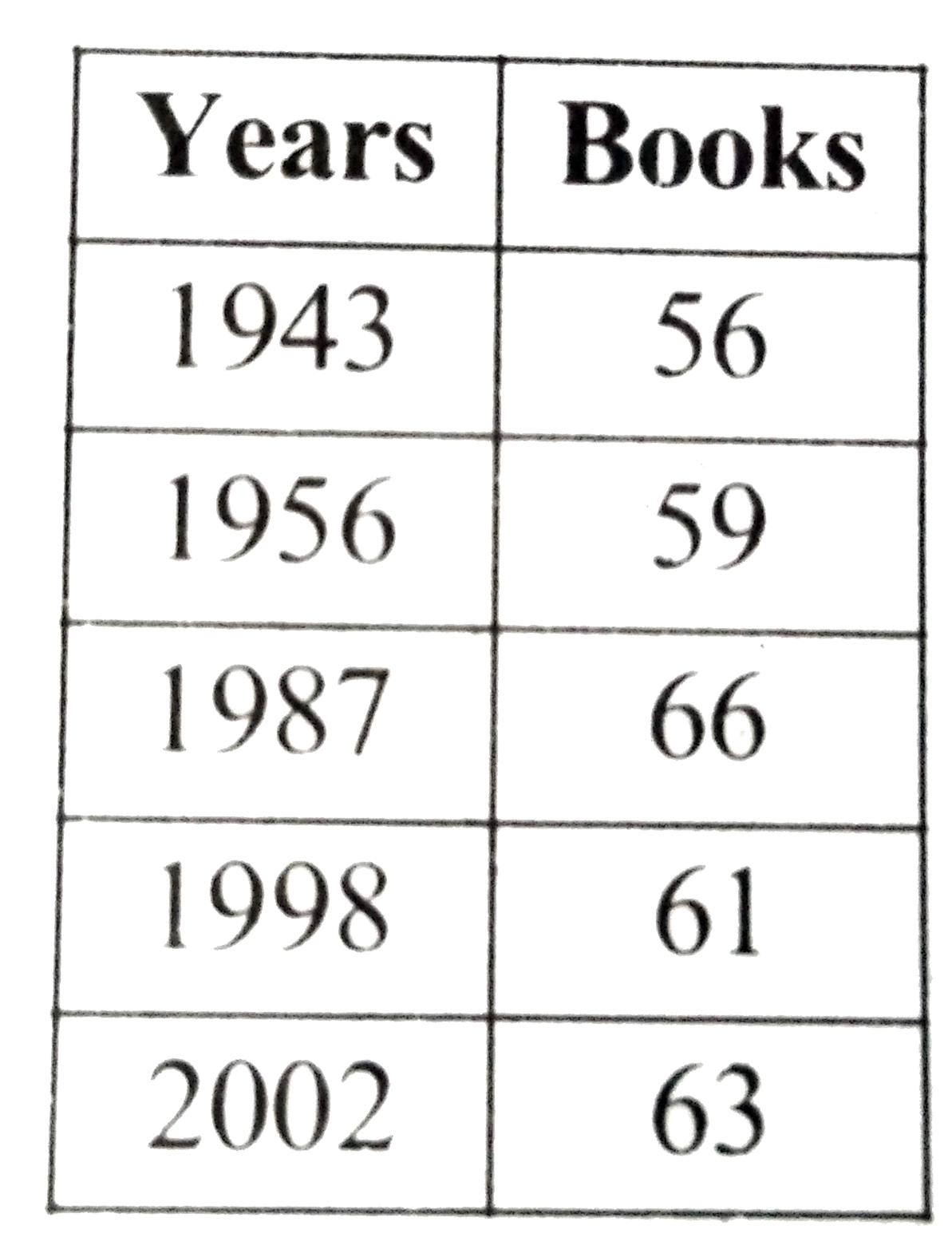
|
|
| 1194. |
Statements: All pins are keys No keys are locks No lock is a door Conclusions: I. Some doors being pins is a possibility II. All doors which are pins also being keys is a possibility |
|
Answer» If only CONCLUSION I follows  So, both conclusion I and II FOLLOW |
|
| 1195. |
Statements: Some trees are tall All tall are healthy all healthy are not all Conclusions: I. Some healthy are tall II.Some treese are not tall. |
|
Answer» If only CONCLUSION I FOLLOWS 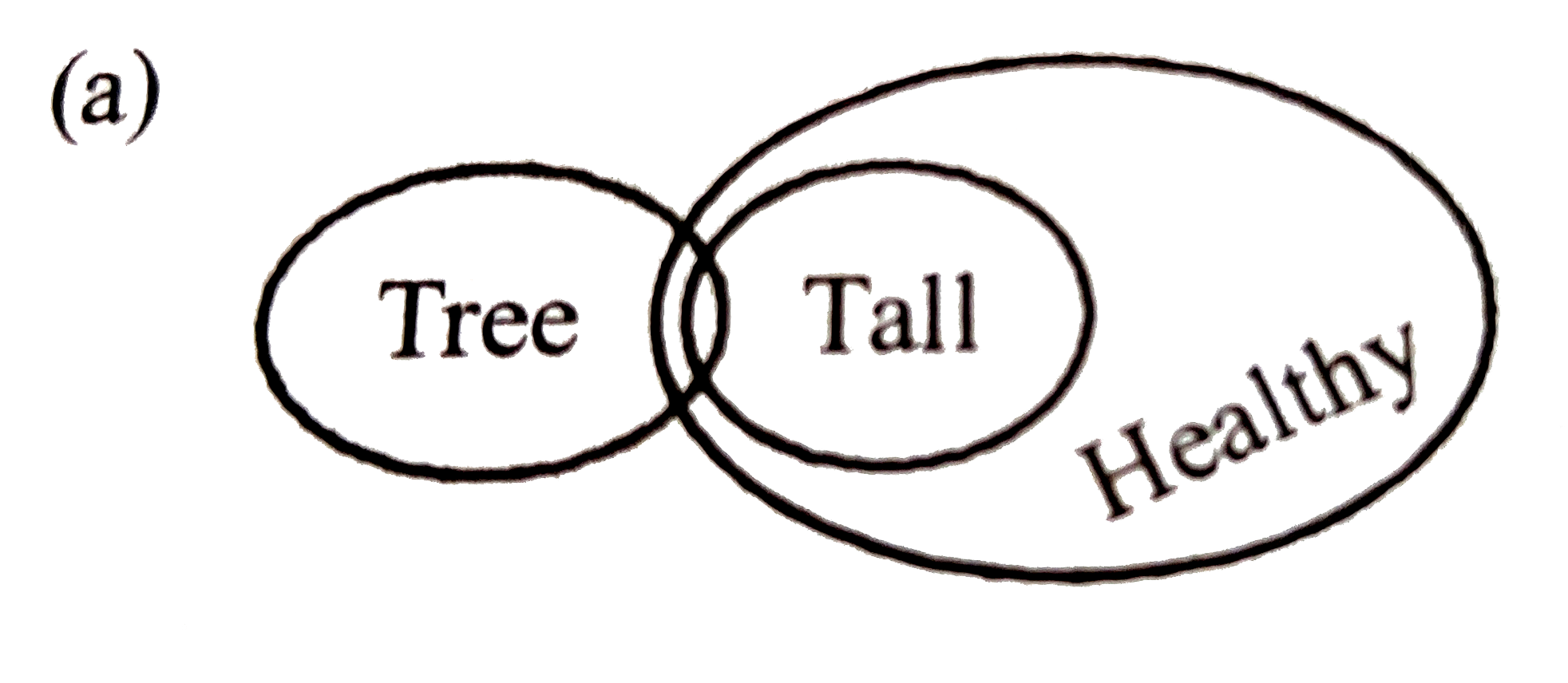 So, only I follows |
|
| 1196. |
Statement : The college has finally received accreditation and has gained the status of a deemed university. Which of the following can be a possible effect of the above statement? |
|
Answer» The principal of the college will now have to be retired government official |
|
| 1197. |
B 5 R 1 @ E K 4 F 7 c L A M 2 P 3 % 9 H I W 8 * 6 U J $ V Q # Which of the following is the fifth to the left of the seventeenth form the left end of the above arrangement? |
|
Answer» L |
|
| 1198. |
Statement: For a third time in a row this week, the Indira Gandhi International Airport was put on a full alert today after Ait India received anonymous message that two terrorists laden with explosives were aboard its Mumbai- Delhi-Hong Kong flight. ---- An authority of Indira Gandhi International Airport Assumptions: I. Anonymous message is not likely to be hoax call II. Anonymous message is likely to be hoax call III. Alertness might be helpful is reducing the menace. |
|
Answer» Only I & III |
|
| 1199. |
Ram is 9 m to the south to Ramsey . Ramsey is 5 m to the east of Ramandeep.Ramandeep is 4 m to the north of Raman. Ran singh is 3 m west to Raman. Ramanand is 7 m south of Ram singh . Ramkunj is 8m east of Ramanand. How far and in direction is Ramsey from Ramkunj ? |
|
Answer» 11 m to the south |
|
| 1200. |
Ram is 9 m to the south to Ramsey . Ramsey is 5 m to the east of Ramandeep.Ramandeep is 4 m to the north of Raman. Ram singh is 3 m west to Raman. Ramanand is 7 m south of Ram singh . Ramkunj is 8m east of Ramanand.If Ramananda is 5m to the Ram , then what is the distance between Raman and Ramananda ? |
|
Answer» 8m |
|